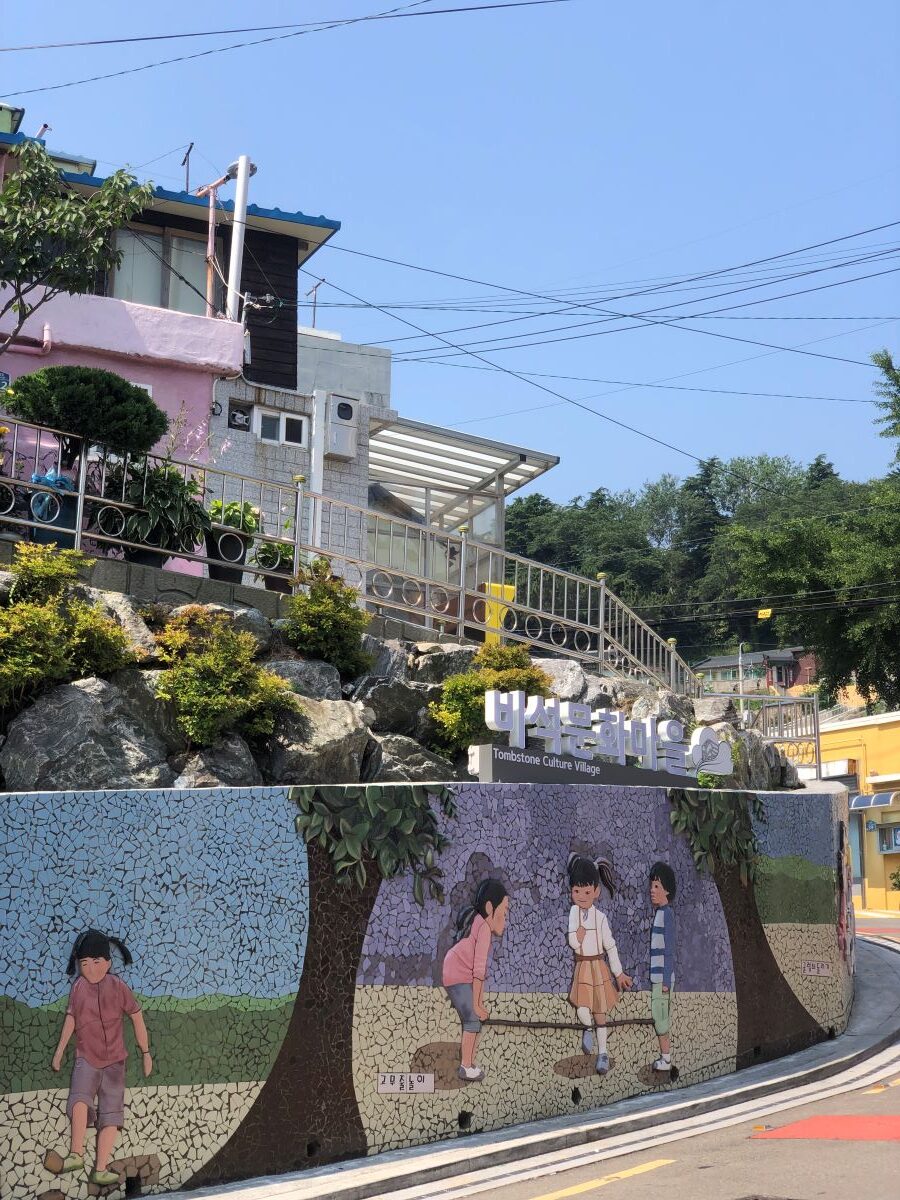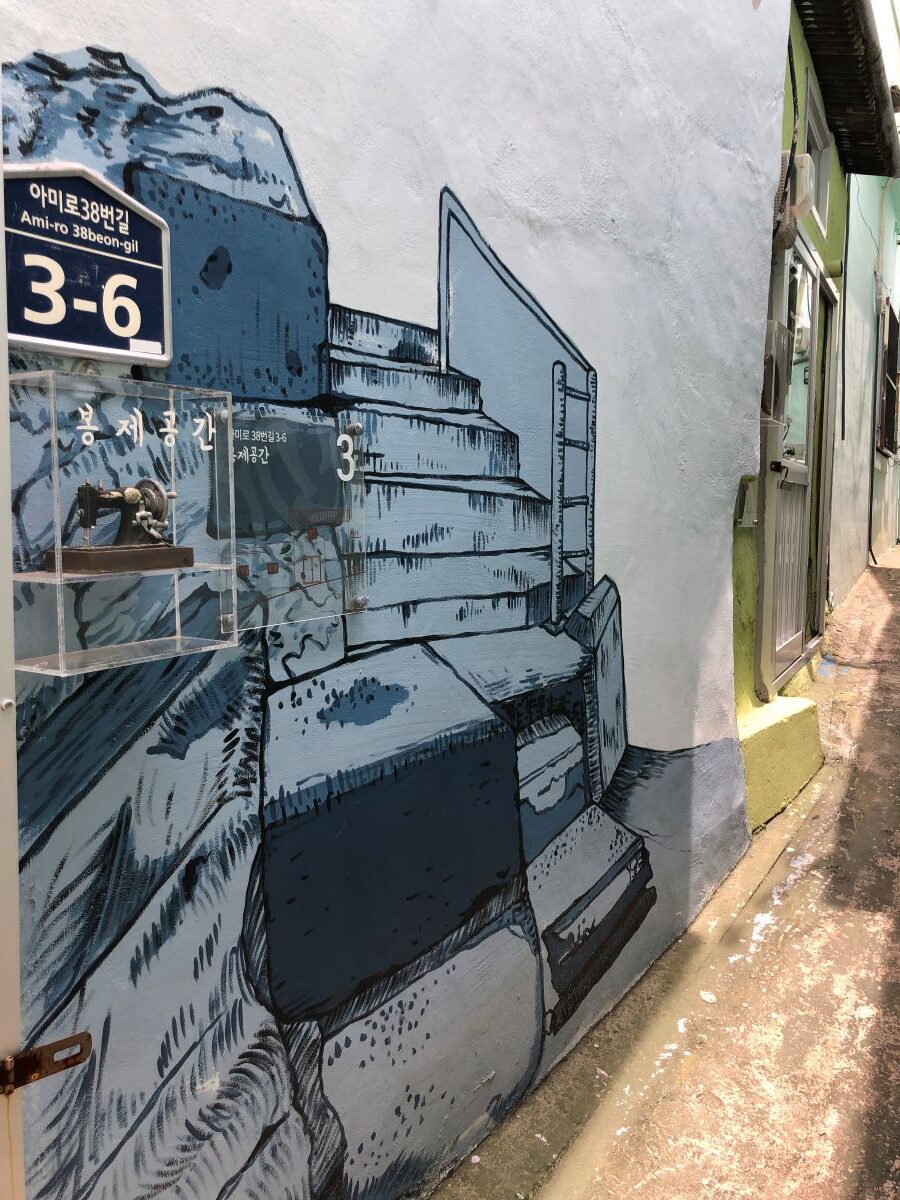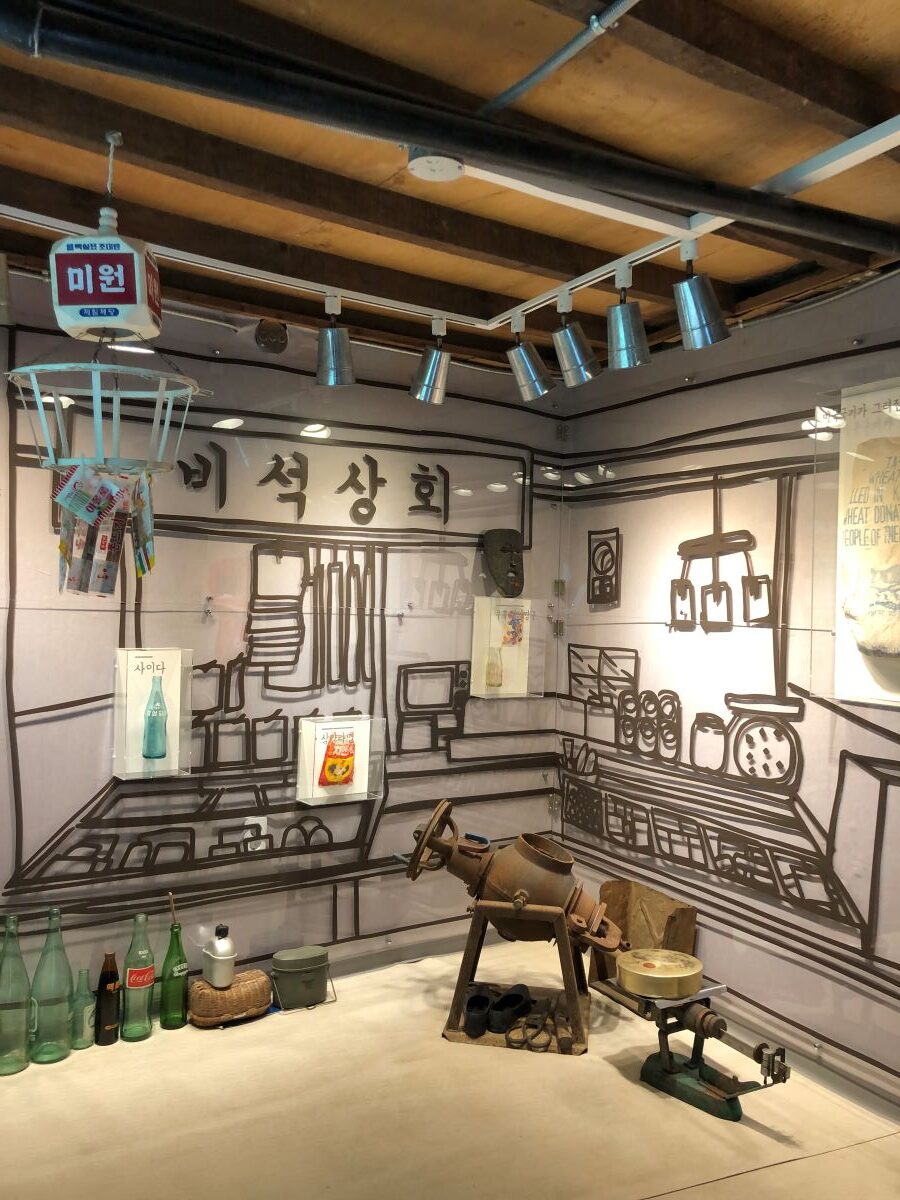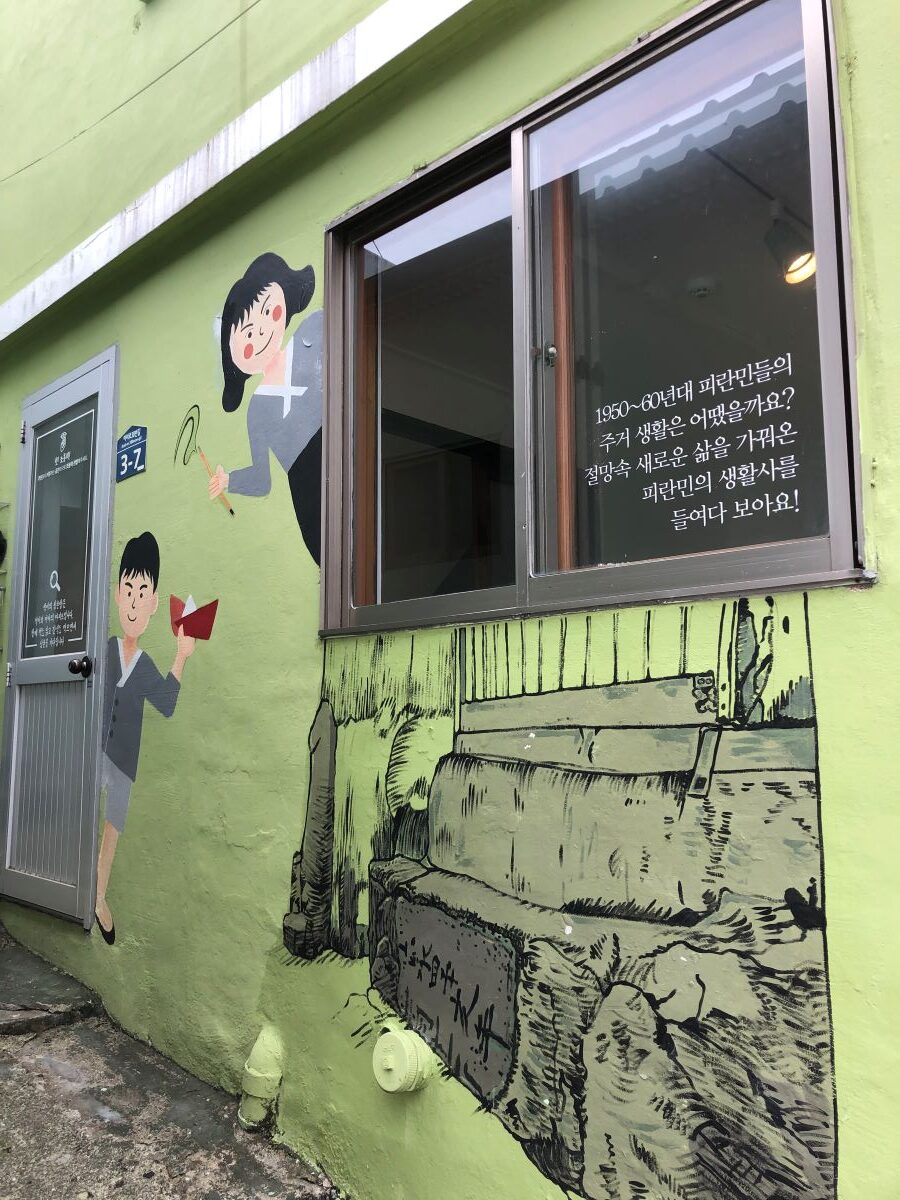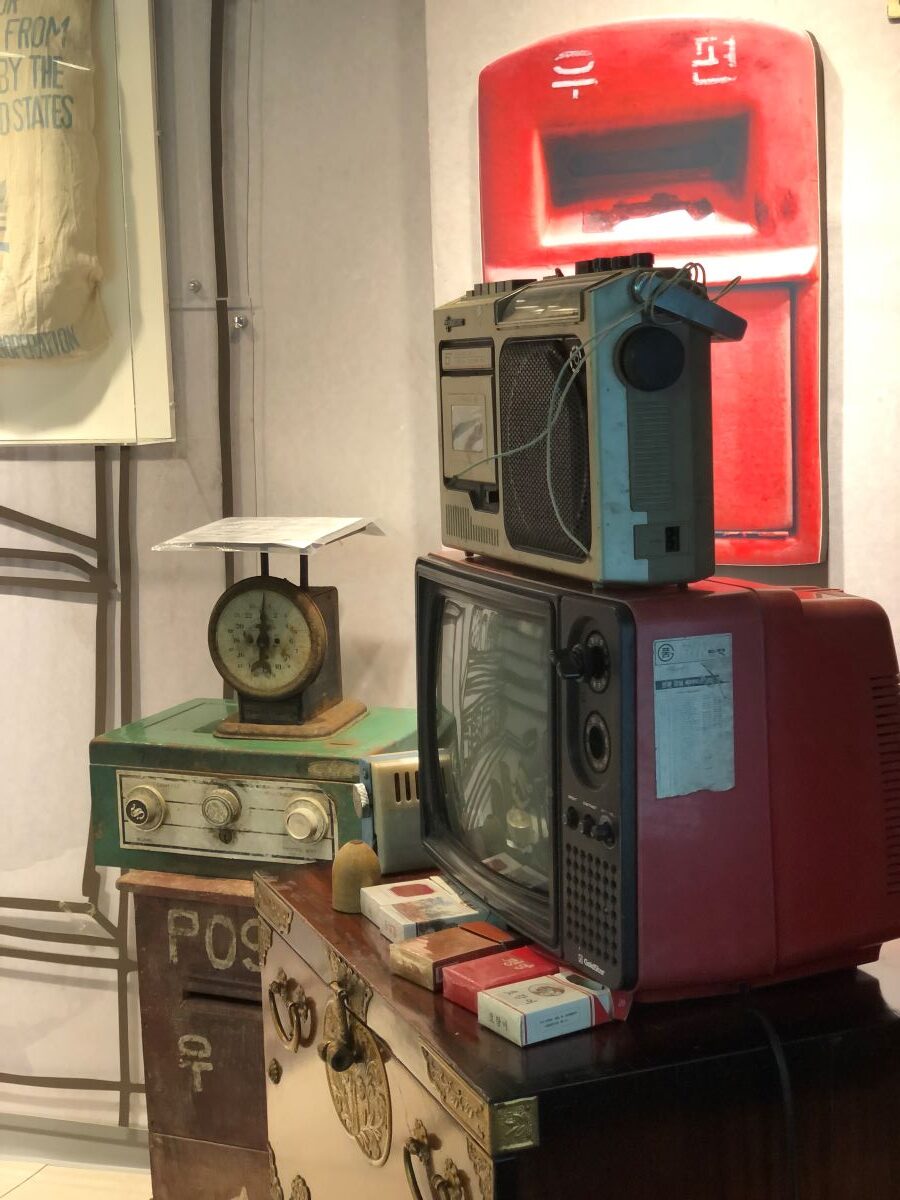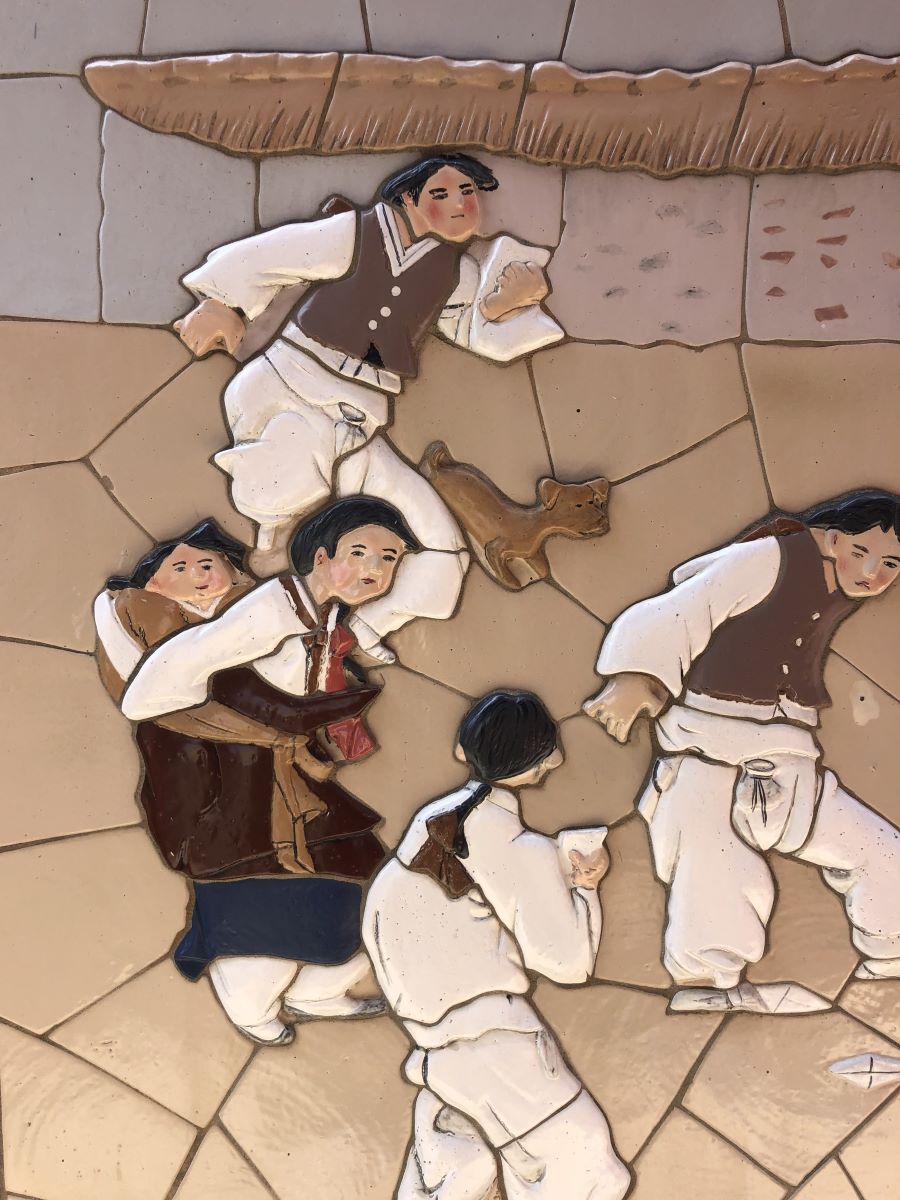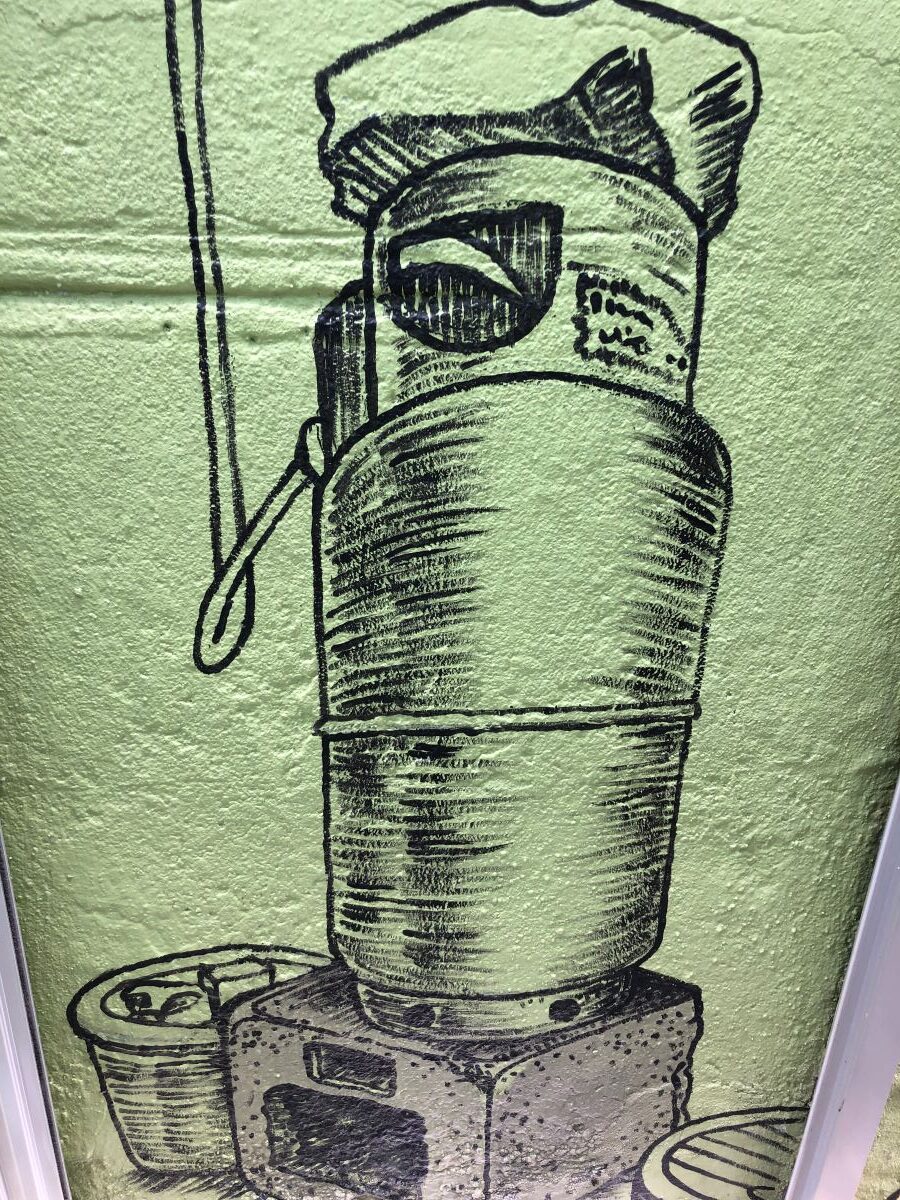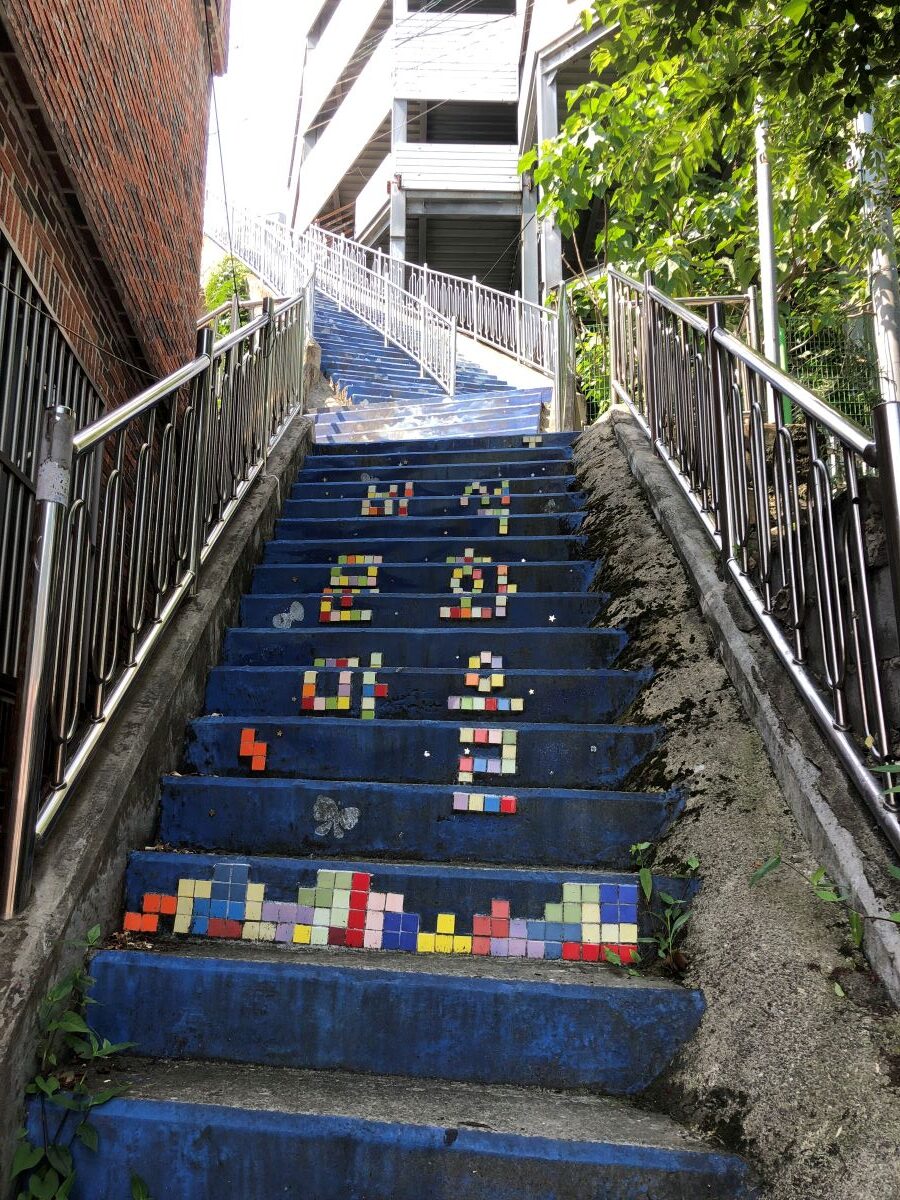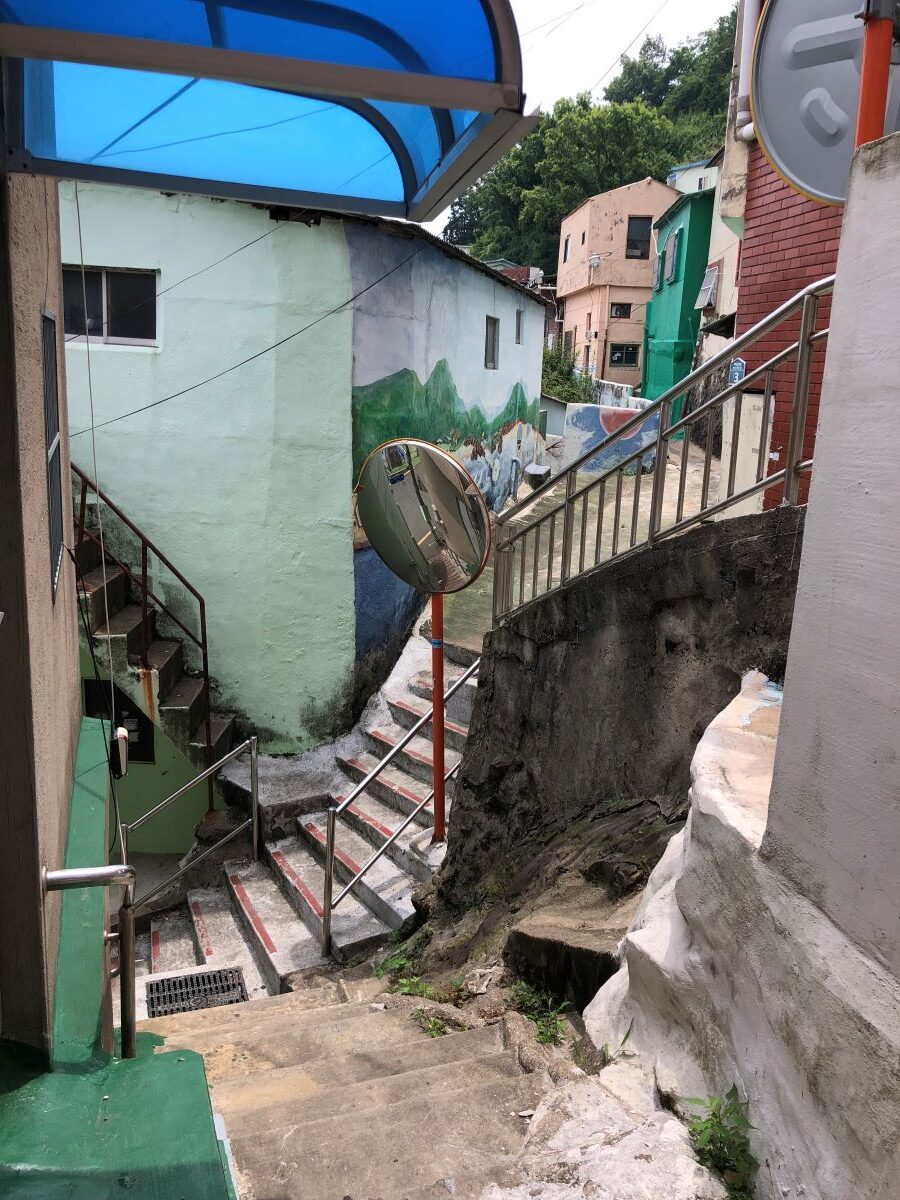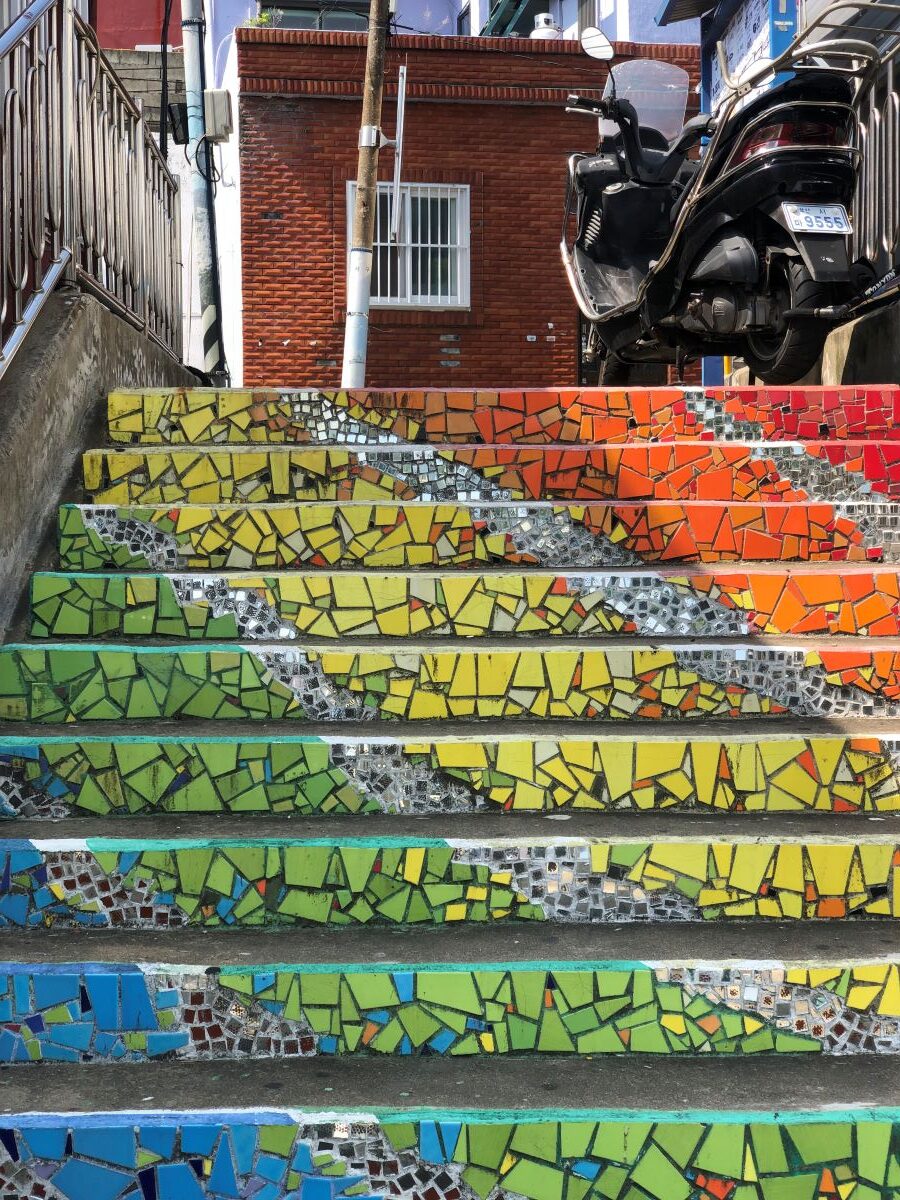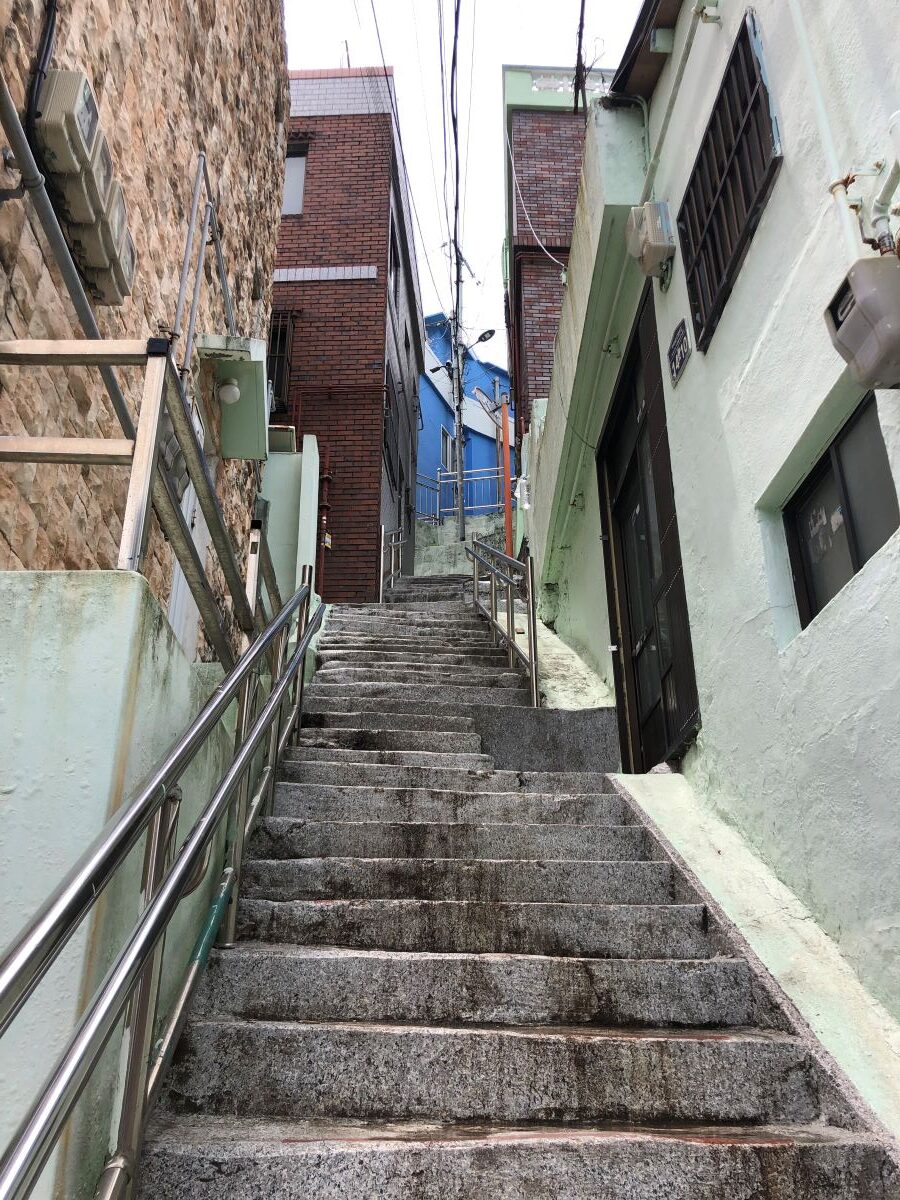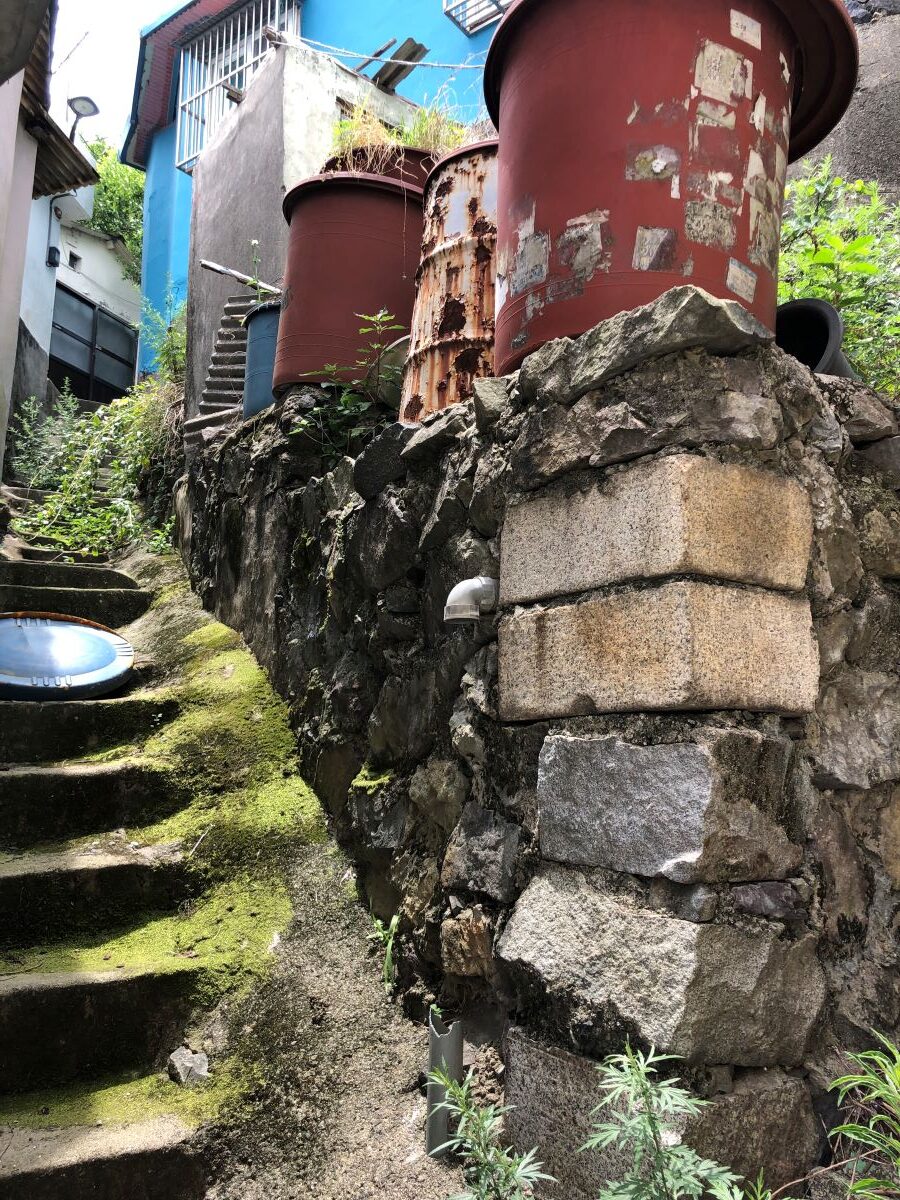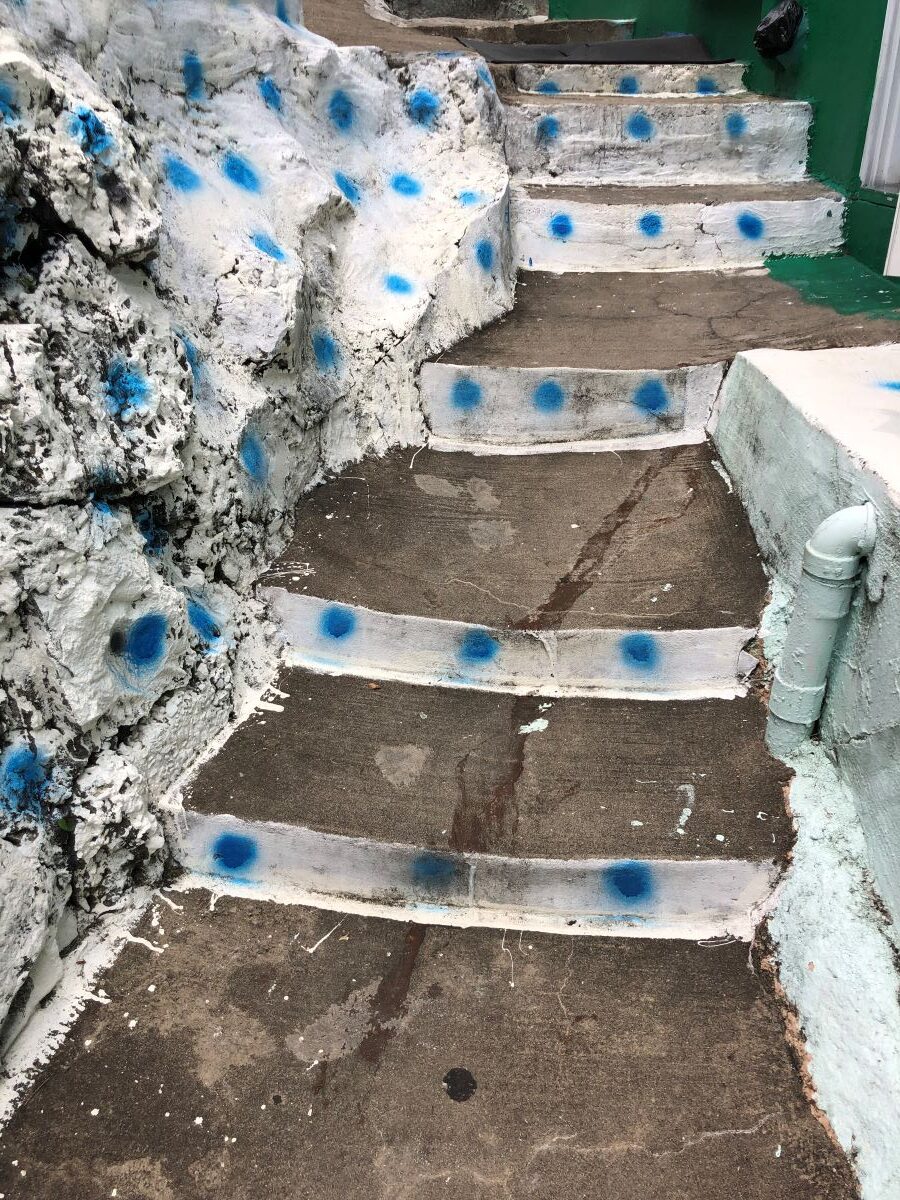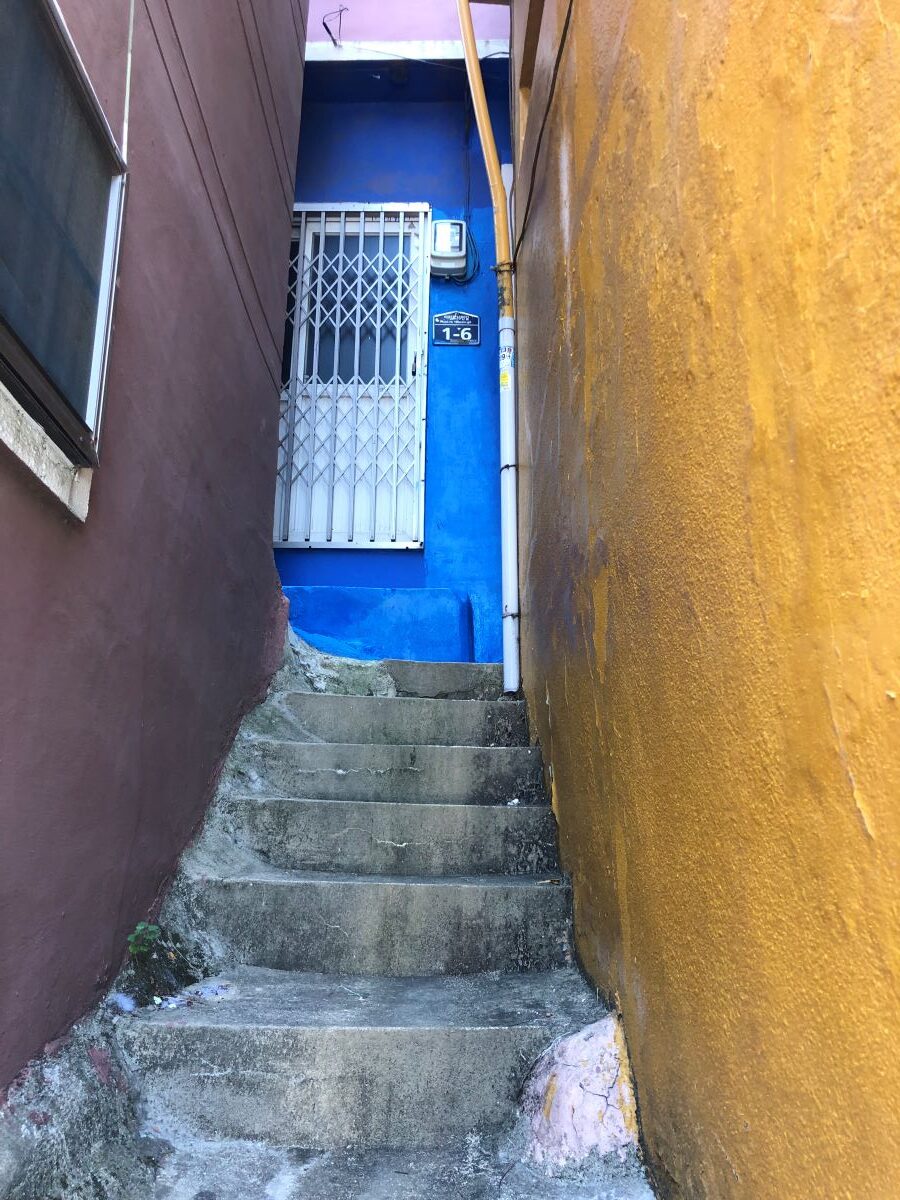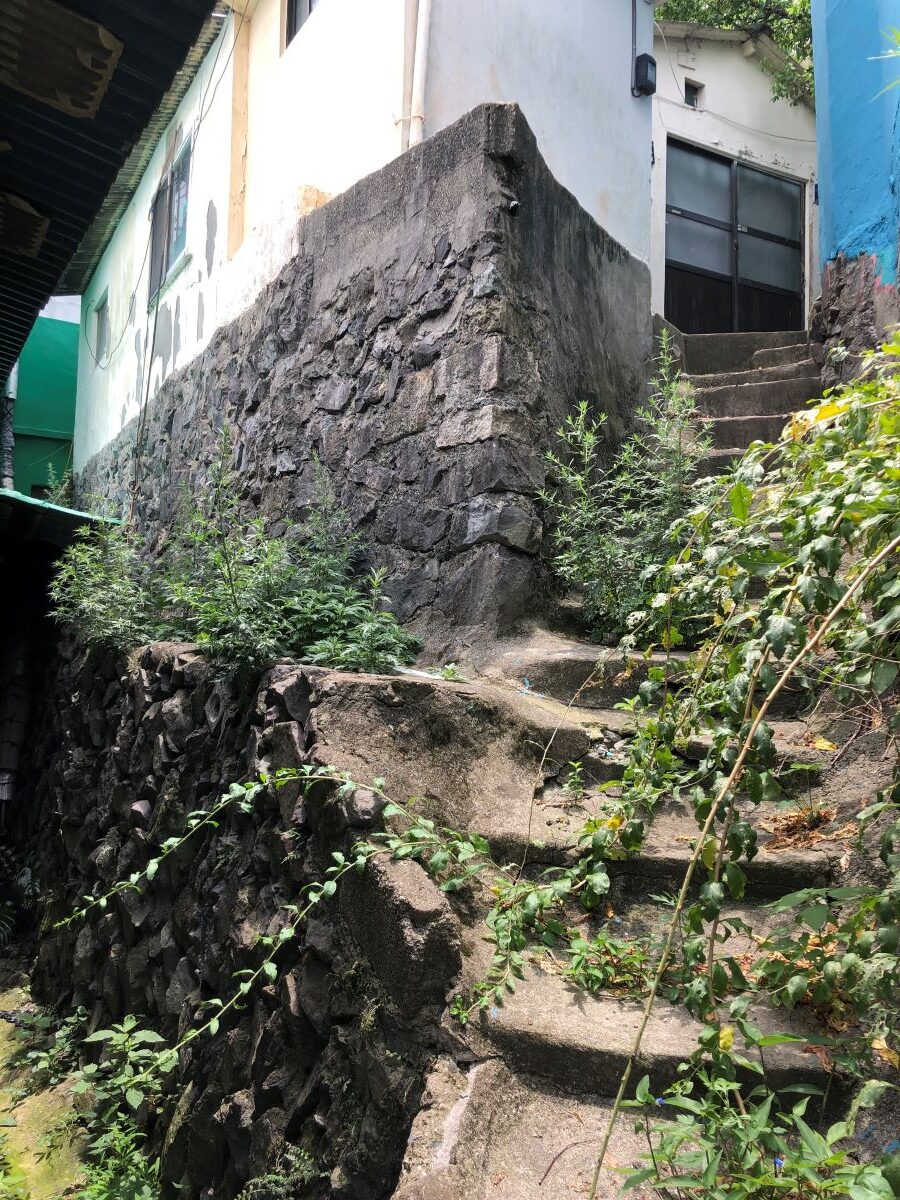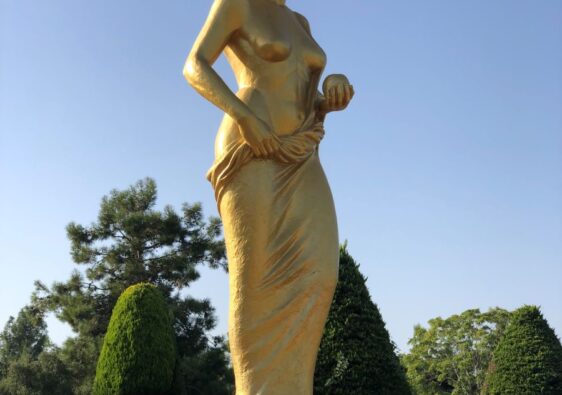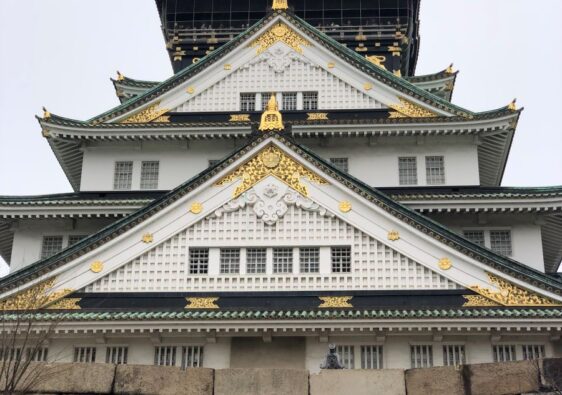It was by accident that I bumped into this village in Busan. I was looking for another village, walking around this hilly area, when I discovered a sign and small museum. Quite by chance, I realized I had found a treasure. I spent a fascinating day at Ami-dong Tombstone Village in Busan.
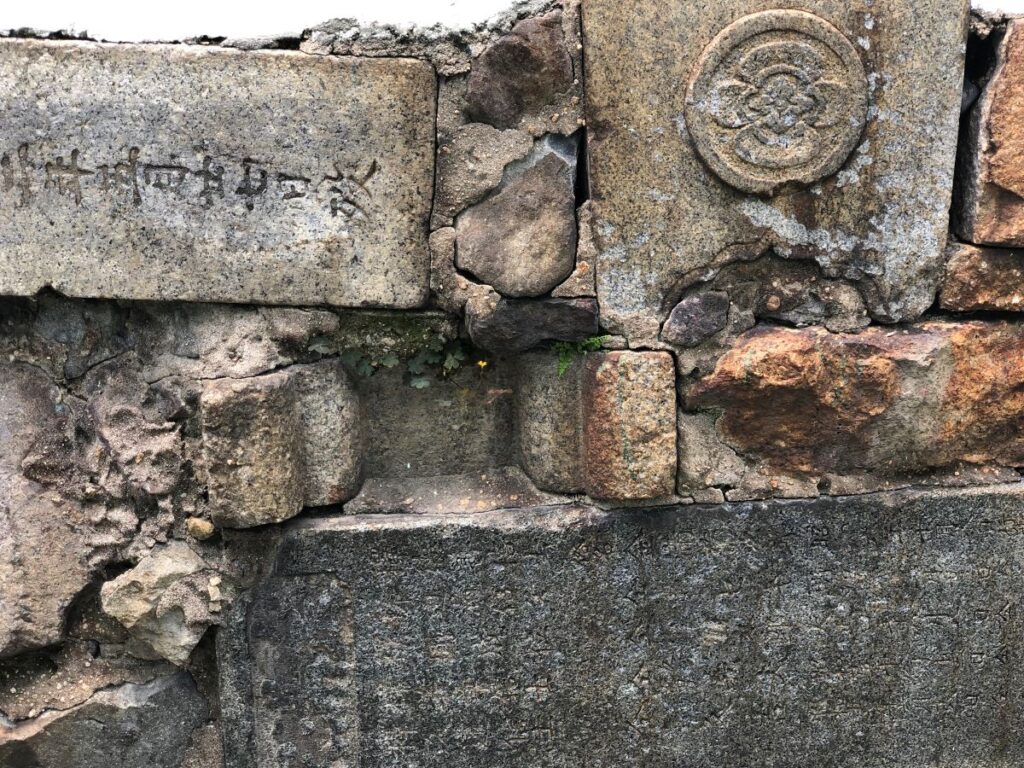
Getting There
A metro ride from the city and exiting at the Toseong station will get you into the general vicinity. From here the walk is about 15 minutes, most of which is uphill. I’ll put a google maps link here for the museum. Really though, as soon as you start to see little staircases that head up and into the village on the left-hand side, you can enter.
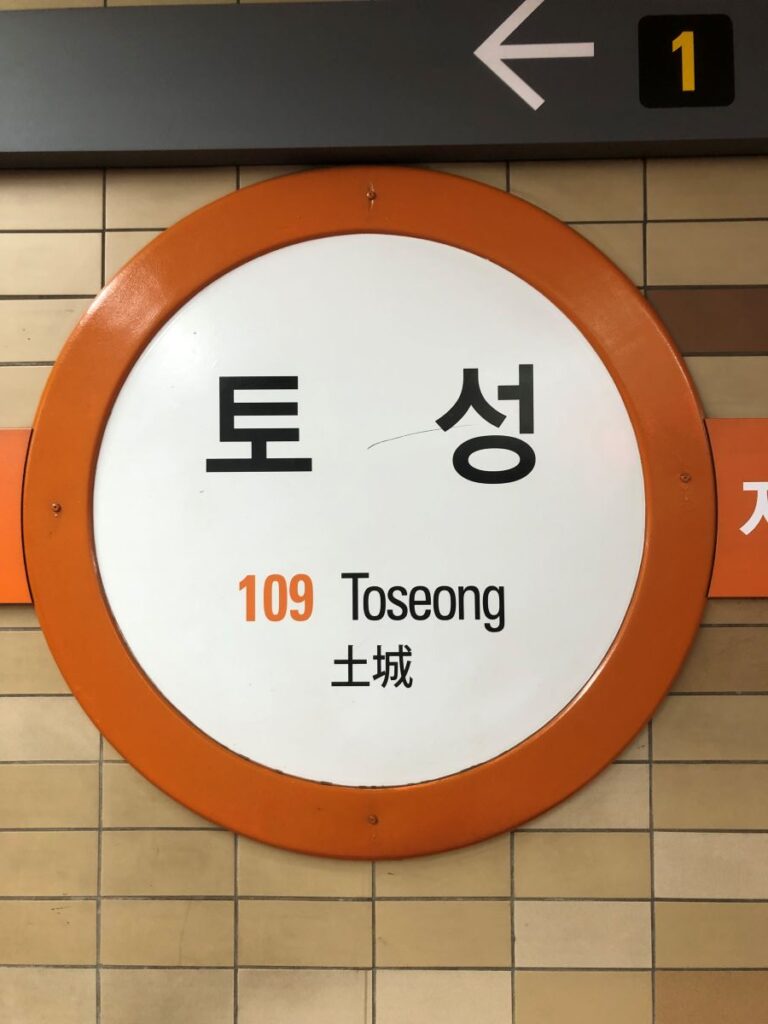
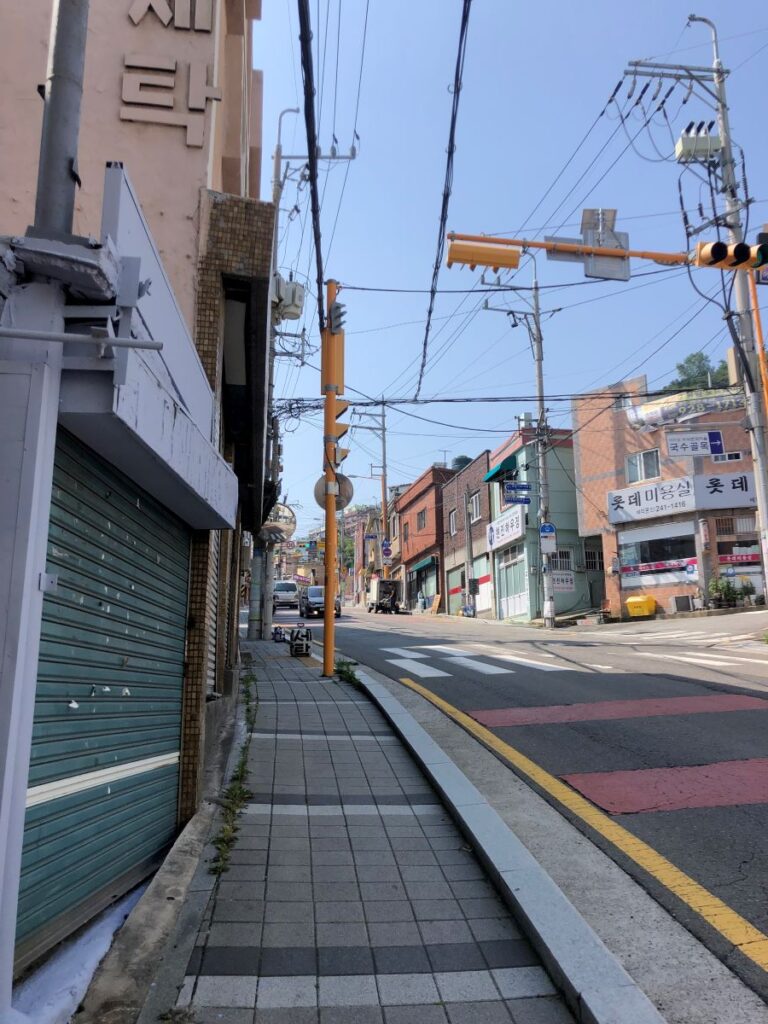
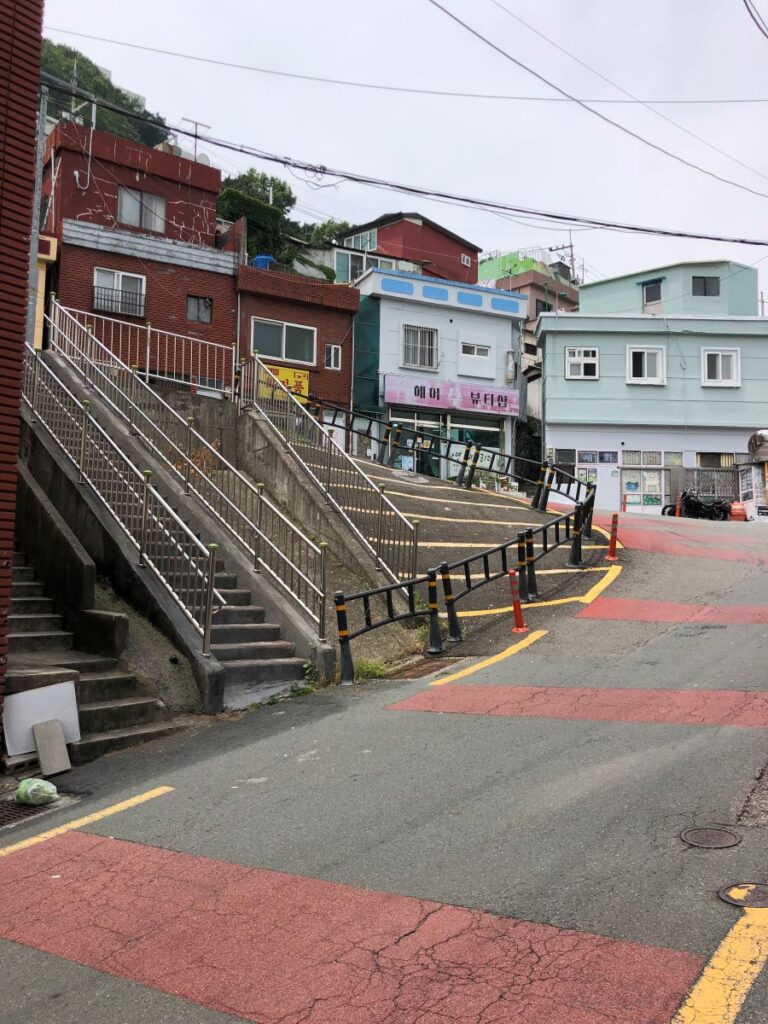
There is a large map up at the museum, that is a great help, if you are only here to find the most popular tombstone locations. For me, I really enjoyed wandering around through these tiny maze-like alleys and finding the tombstones on my own.
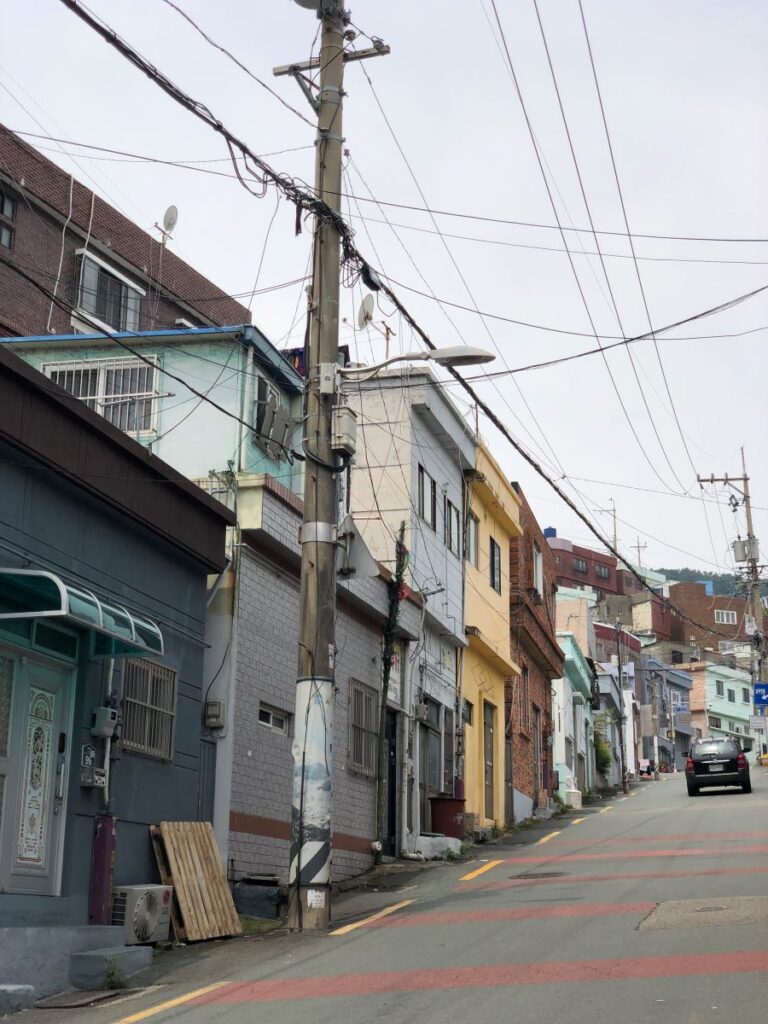
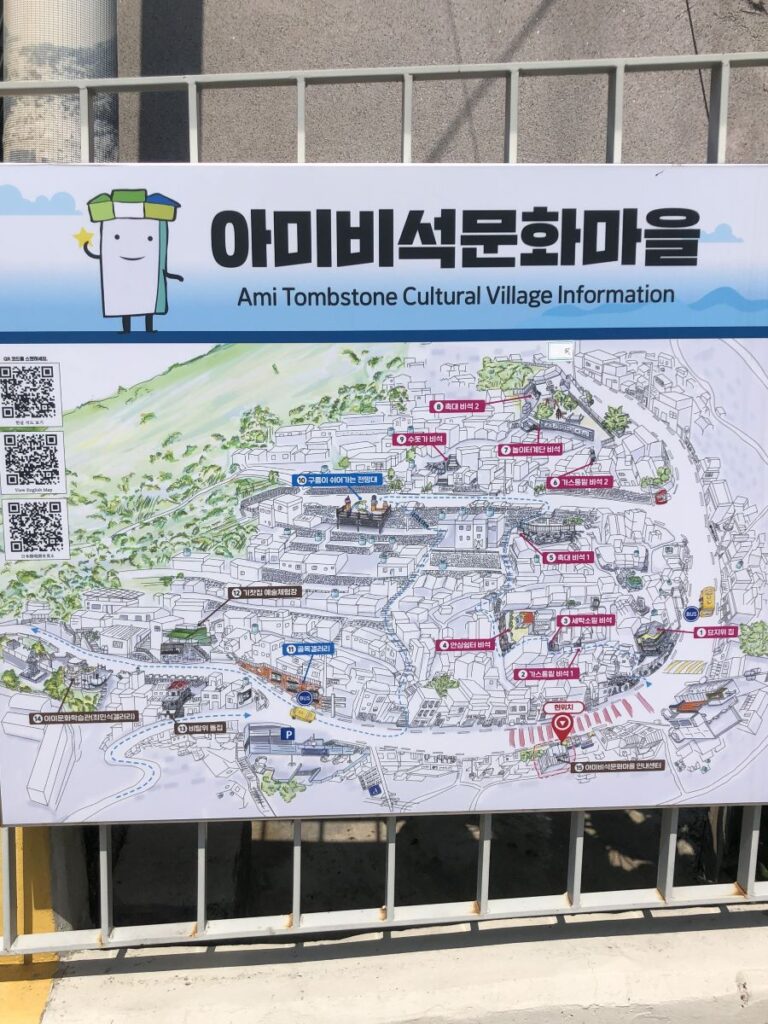
Brief History
When the Japanese occupied Korea from 1910 to 1945, they used this hillside called Ami-dong as a cemetery. Afterwards the area quickly fell into disuse.
The North Koreans invaded the South in 1950, they captured every city but two, Busan being one of those. Because this became a safe area, protected by the UN, it is where the refugees fled to from all over the country.
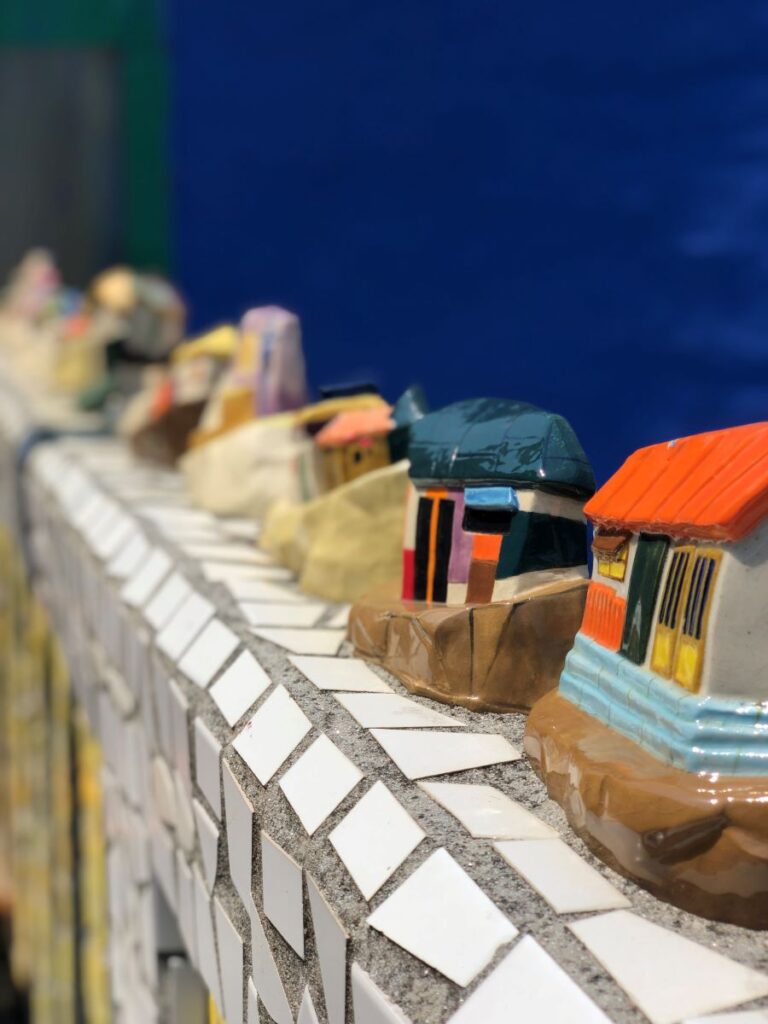
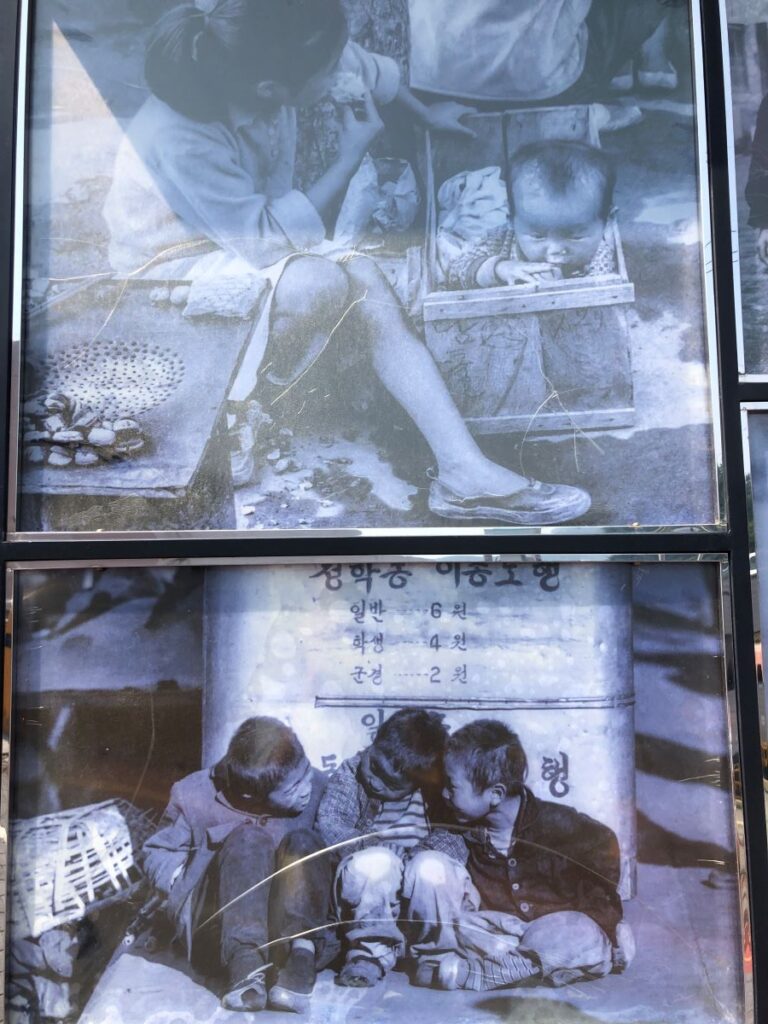
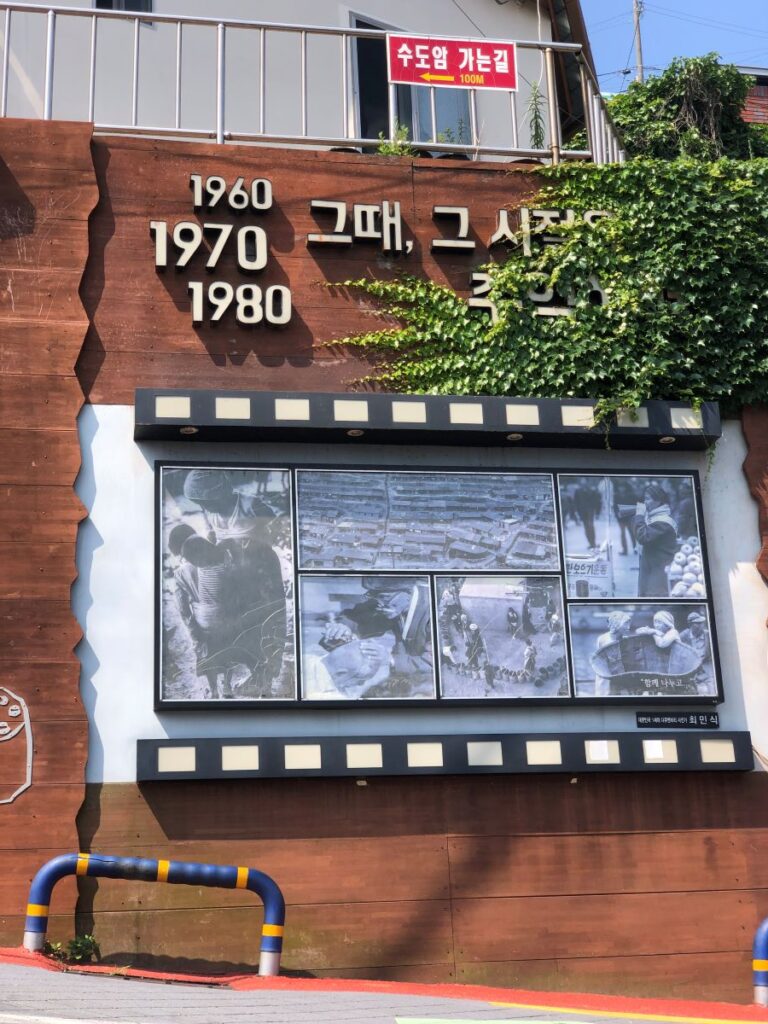
With no where to house people on the flat lands, these refugees were given the old cemetery on the hillside to build their homes. They had nothing except the clothing on their backs. Being as resourceful as they are, the refugees used the tombstones to construct the foundations of their homes, the retaining walls and the staircases that form the maze of alleys we walk through today.
Houses
It seems that very few of the original homes still exist. There is one stone house that is fascinating, and you can see this one from the main road if you are climbing up to the museum. Can you spot the headstone in the stairs?
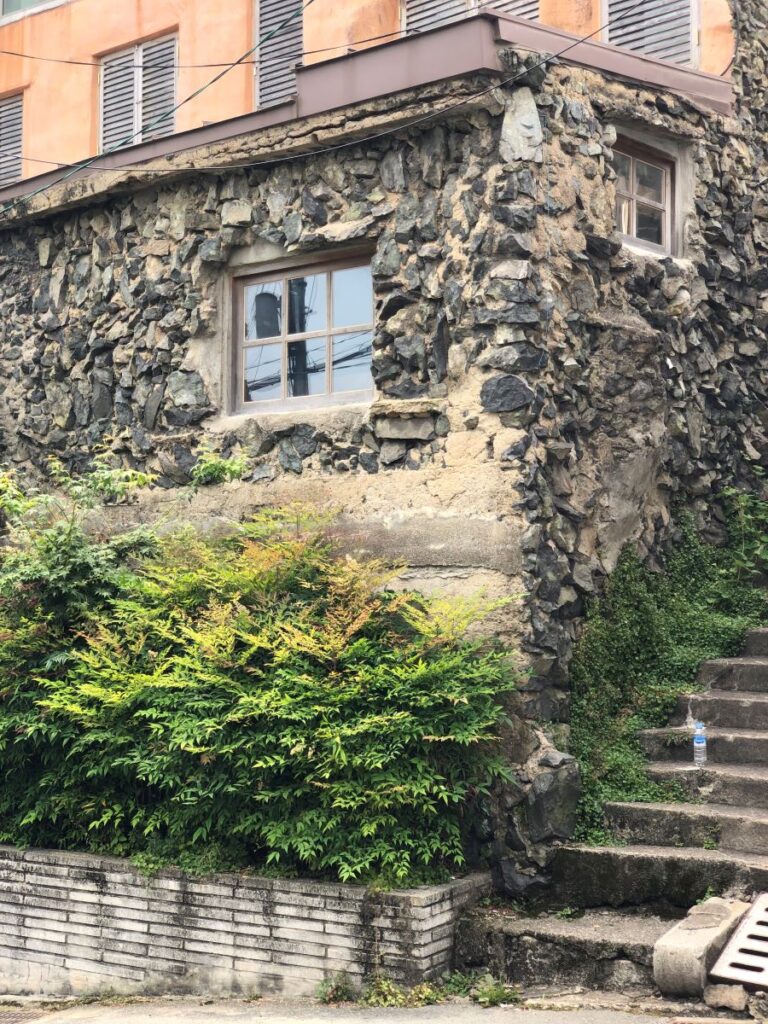
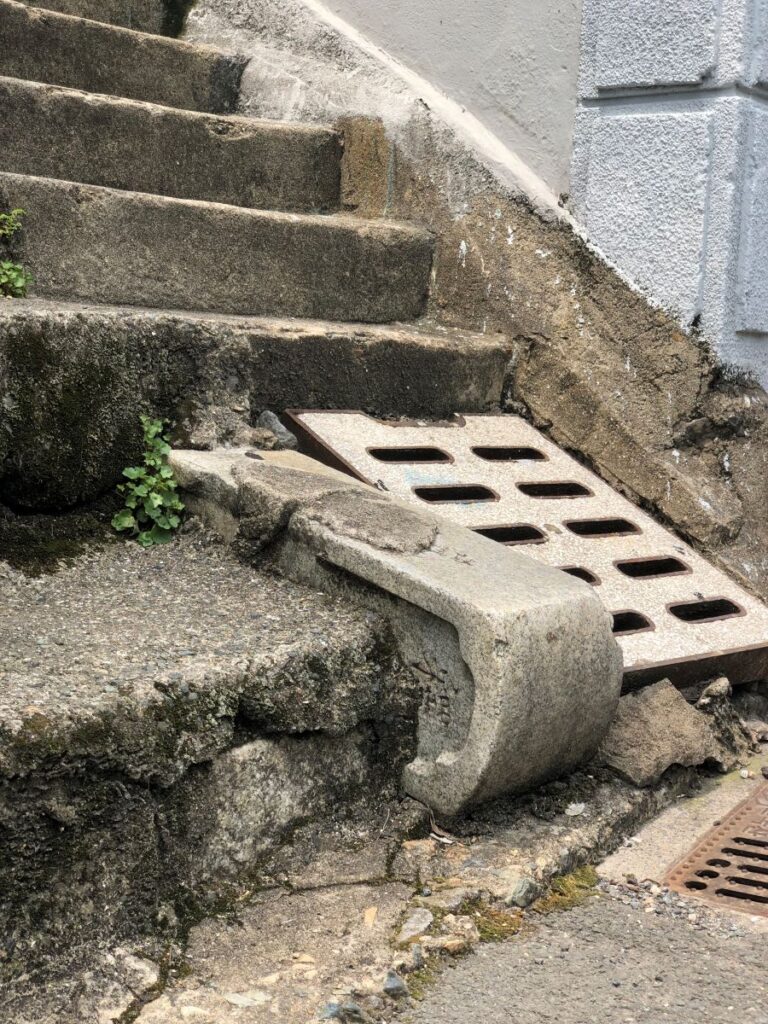
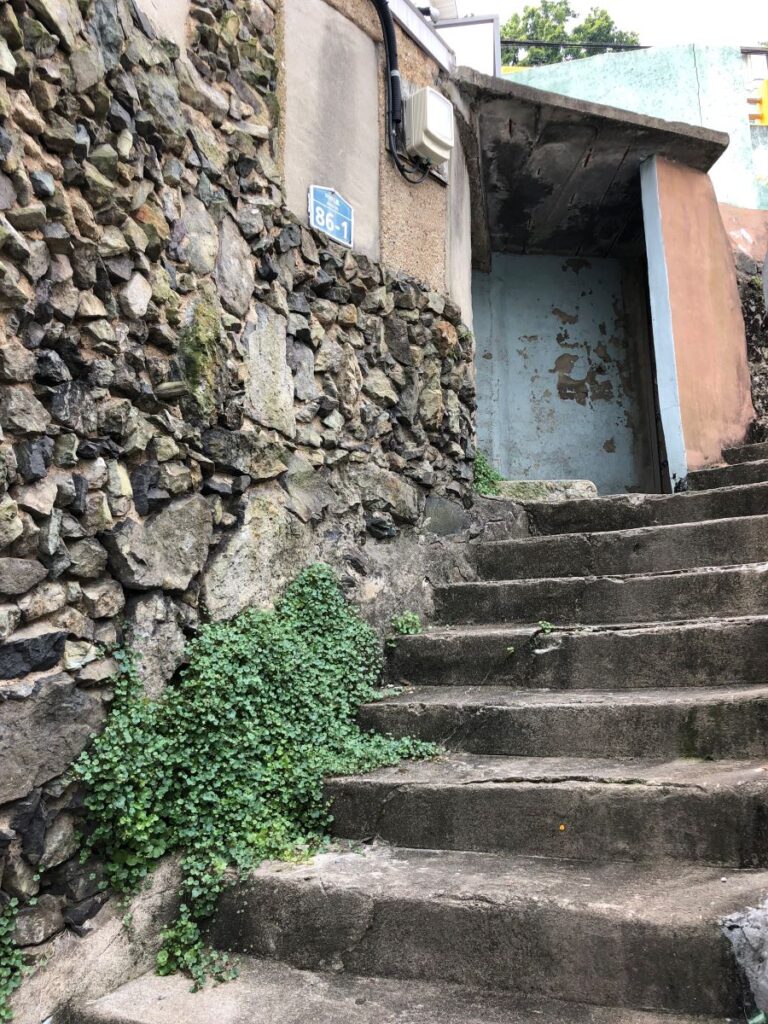
Another house you might see is now covered in plexiglass, to protect it from the elements. It is made of wood and sits upon a large tombstone base.
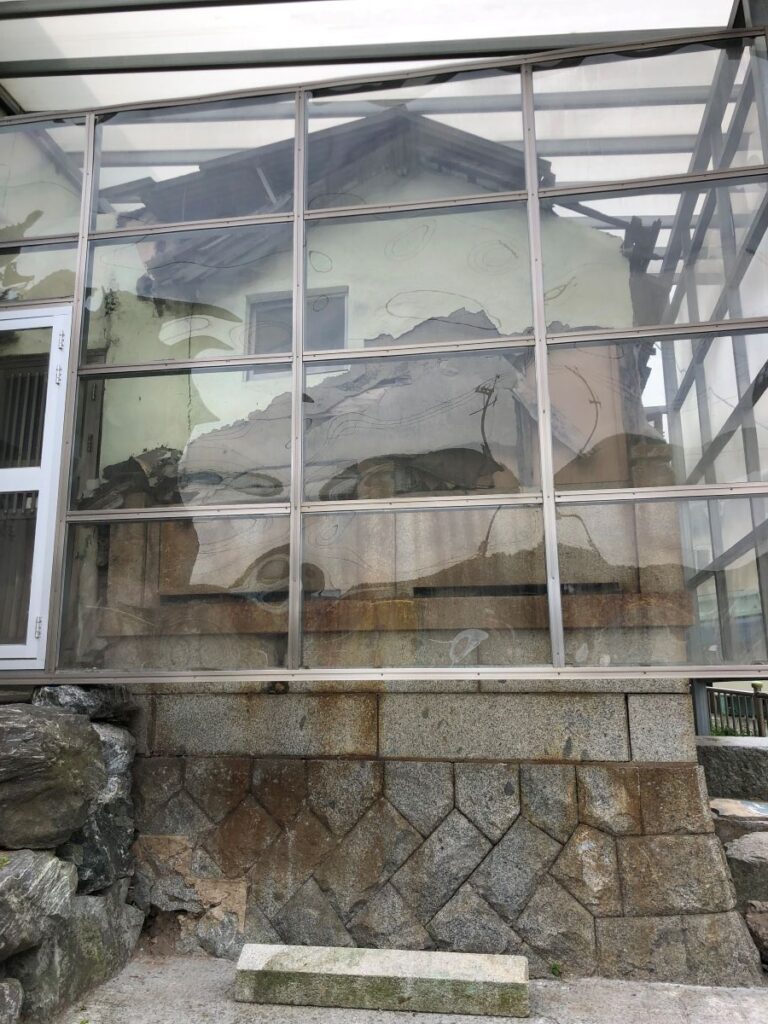
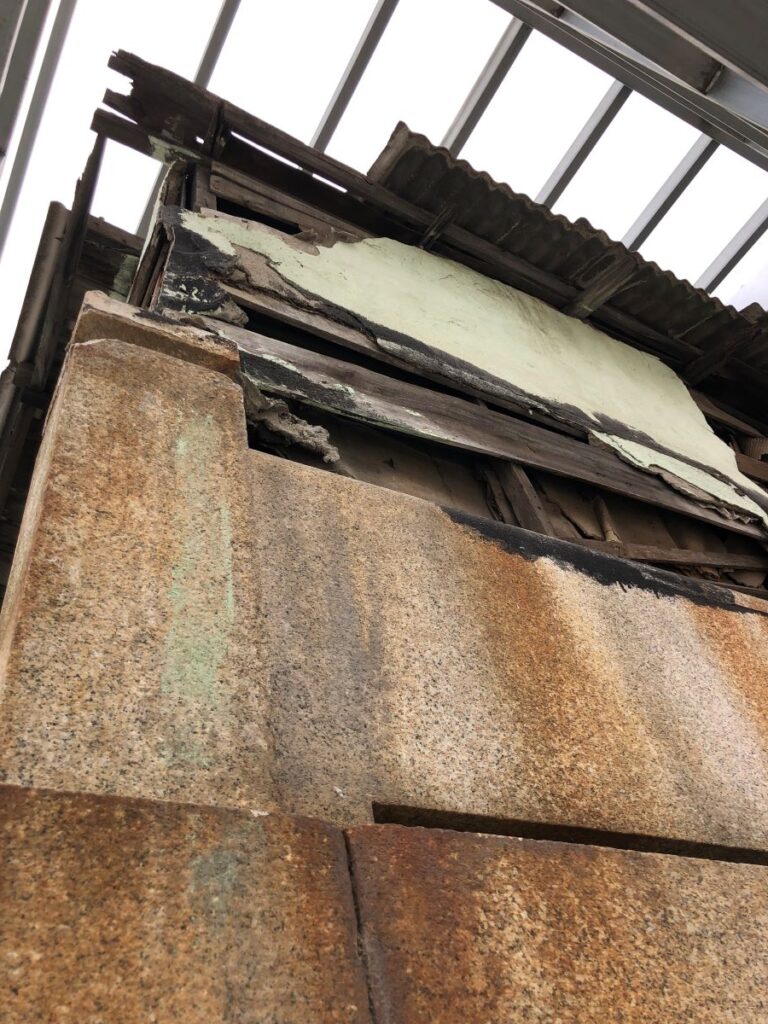
I can spot other remnants of houses, especially the bases of some that still exist here and there. These homes are built quite literally one on top of the other and form a unique puzzle as they intertwine.

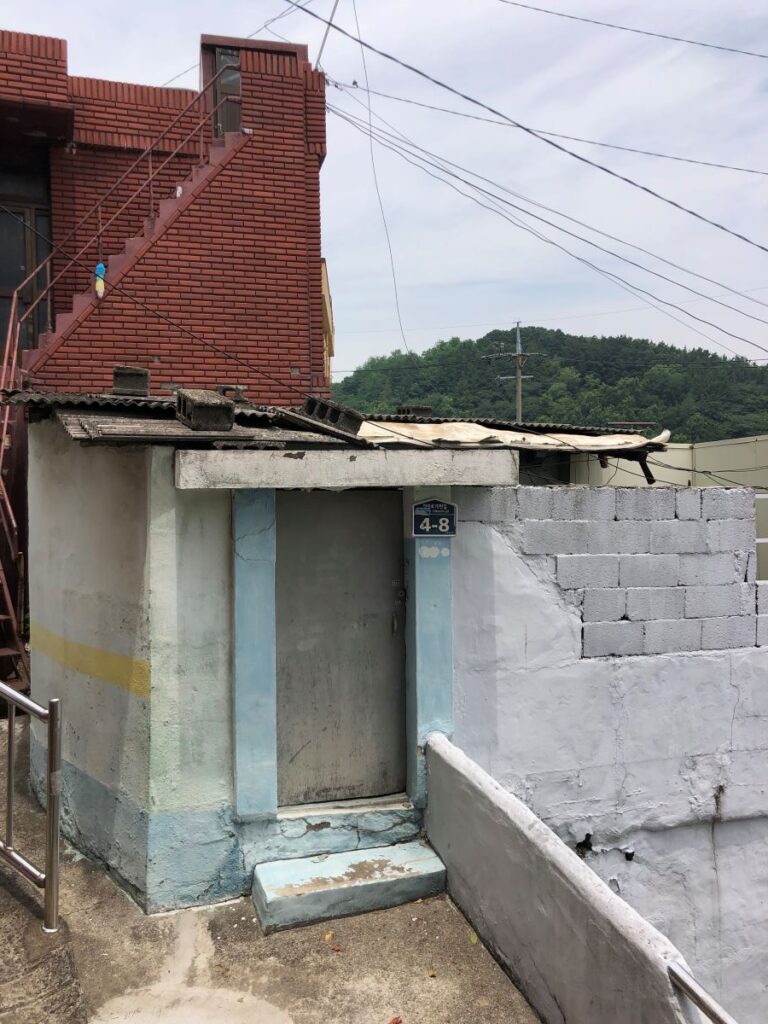
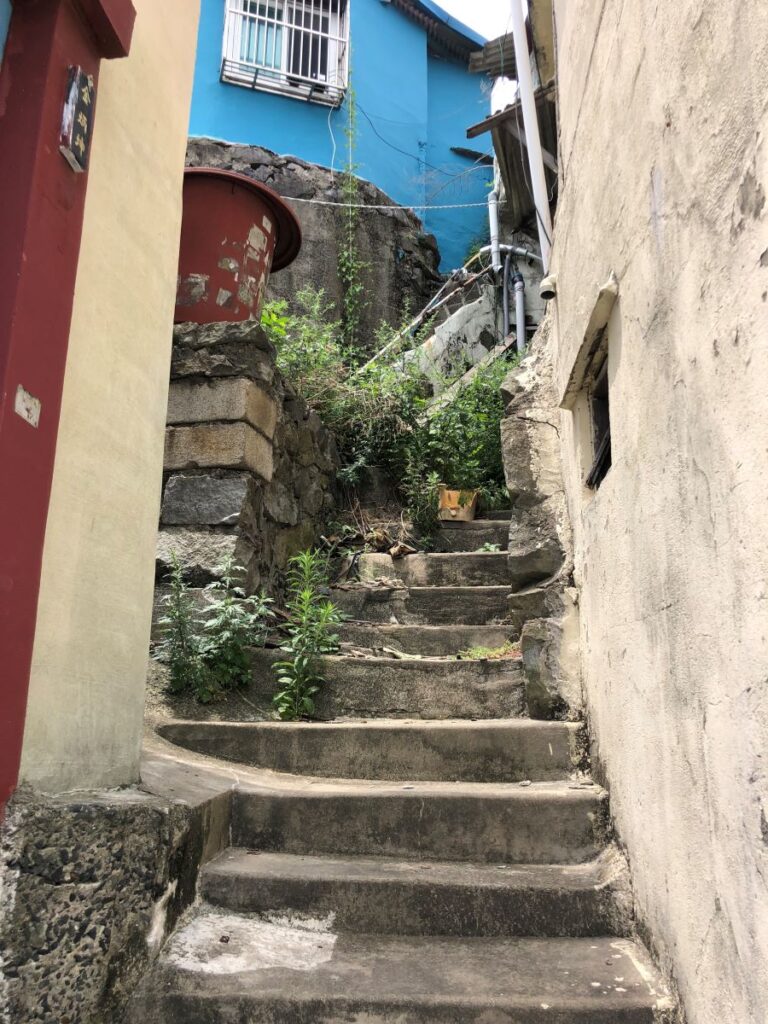
Tombstones
All throughout this area, you are going to see the old Japanese tombstones. Once you spot a few, you quite quickly begin to see them emerge all around you. Many are embedded into the old retaining walls and can clearly be seen if the wall has not been plastered over and painted.
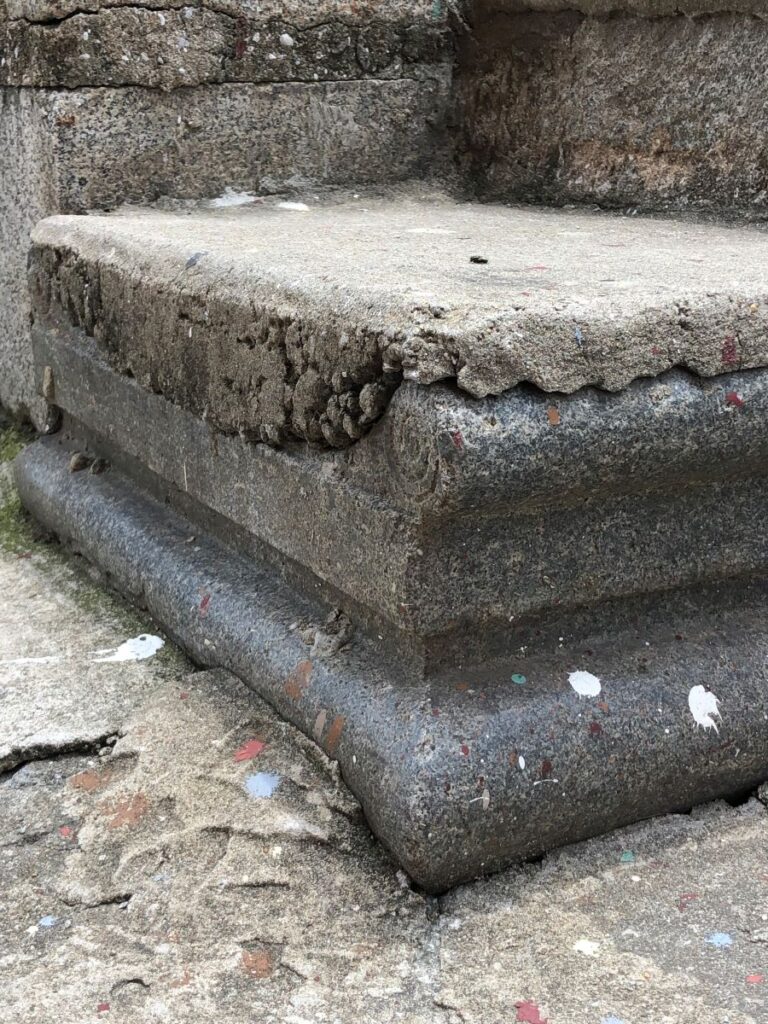
Look inquisitively at any set of stairs and you may just spot one or two in there as well.
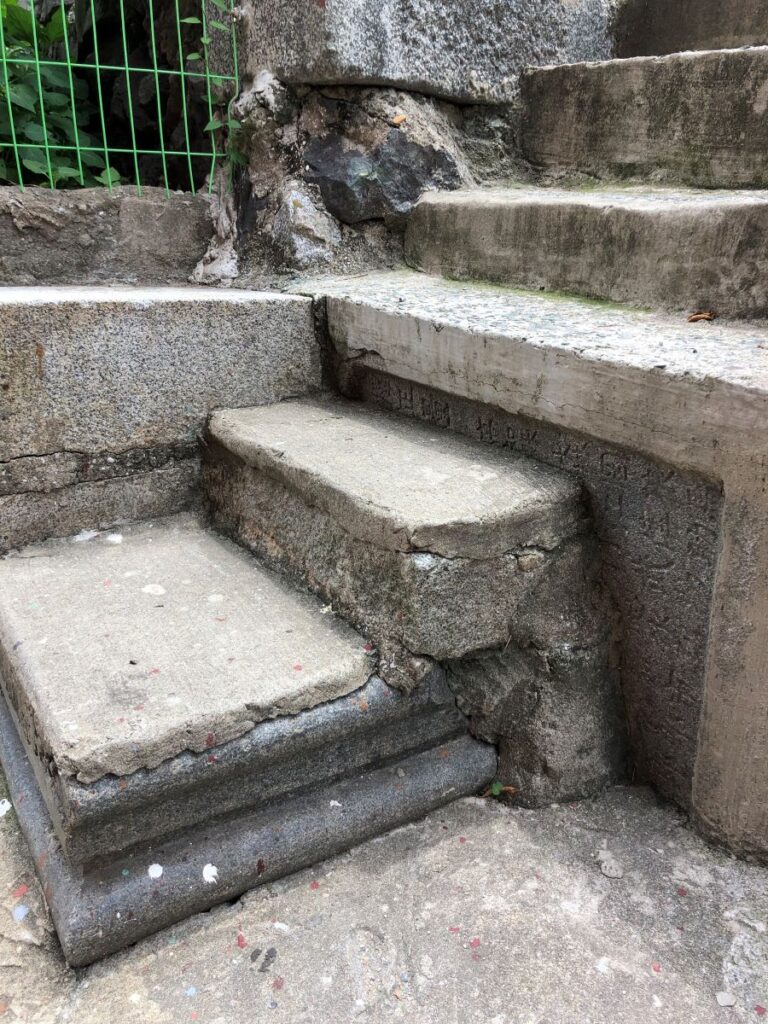

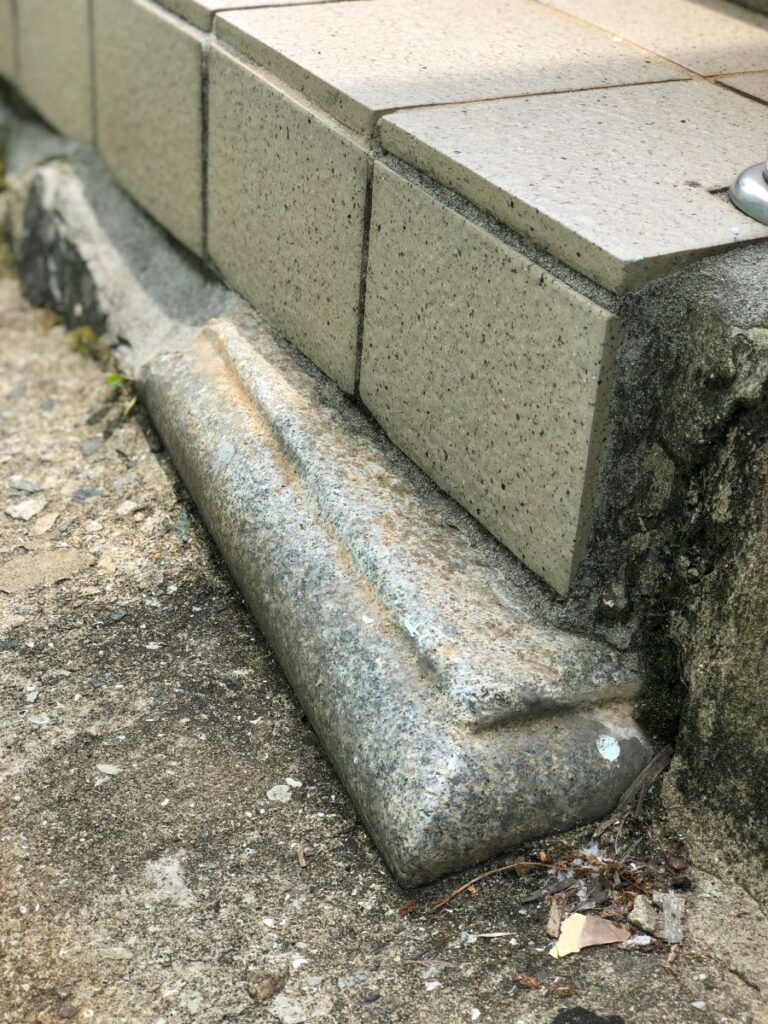
The large gas tanks outside each home are usually propped up on something, and guess what that something is? Quite often a tombstone!
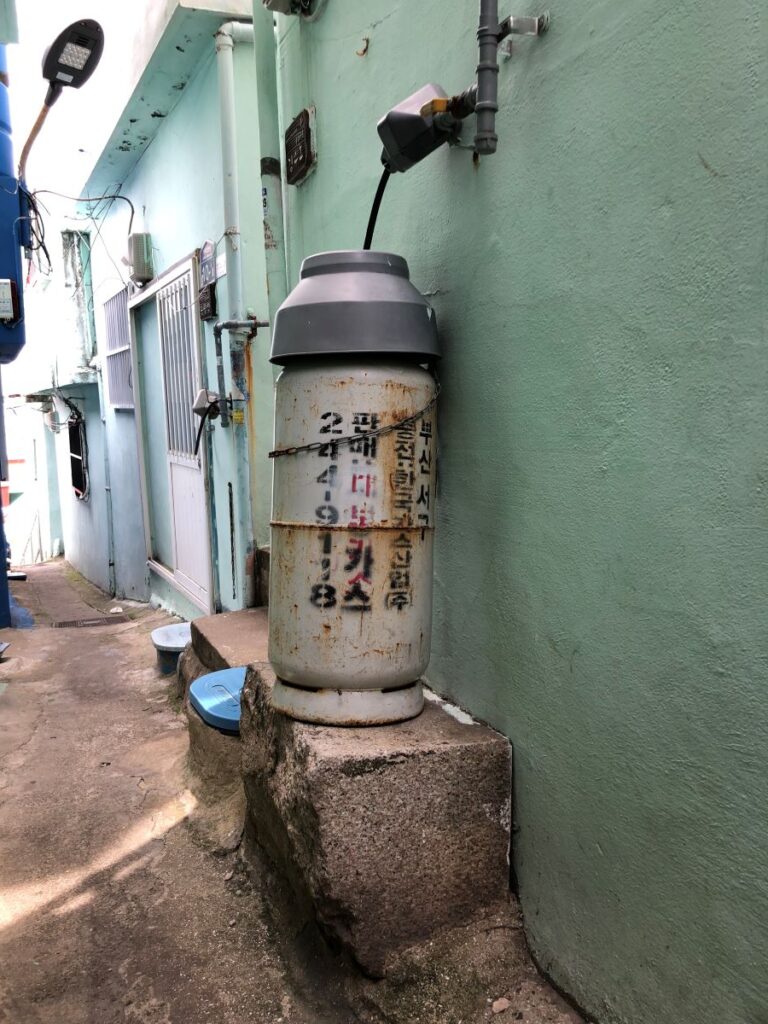


Many of the headstones I saw, the side with the Japanese inscriptions has been buried into the earth and the blank side is what is viewable. A few I could tell have had the inscriptions chiselled away.
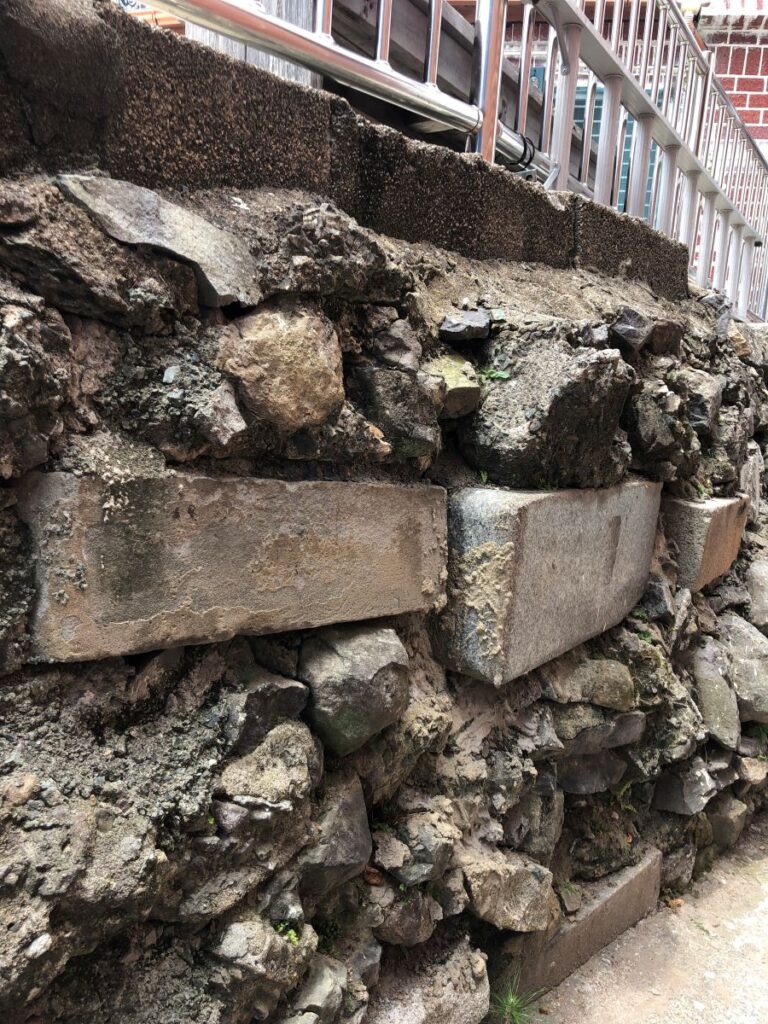
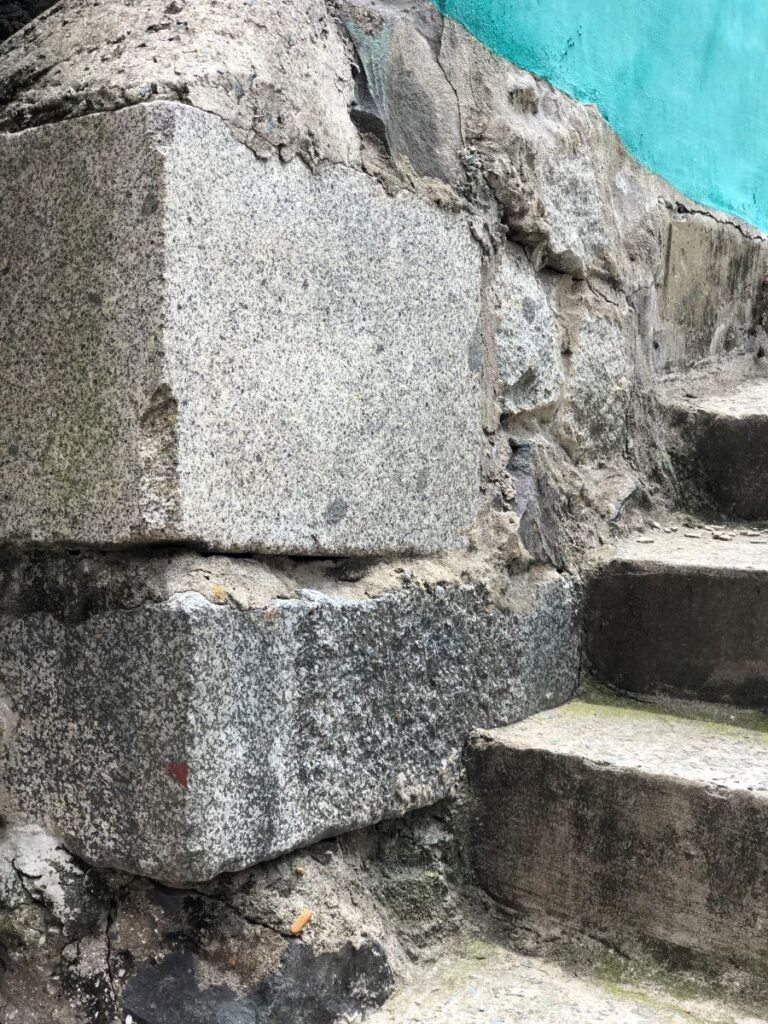
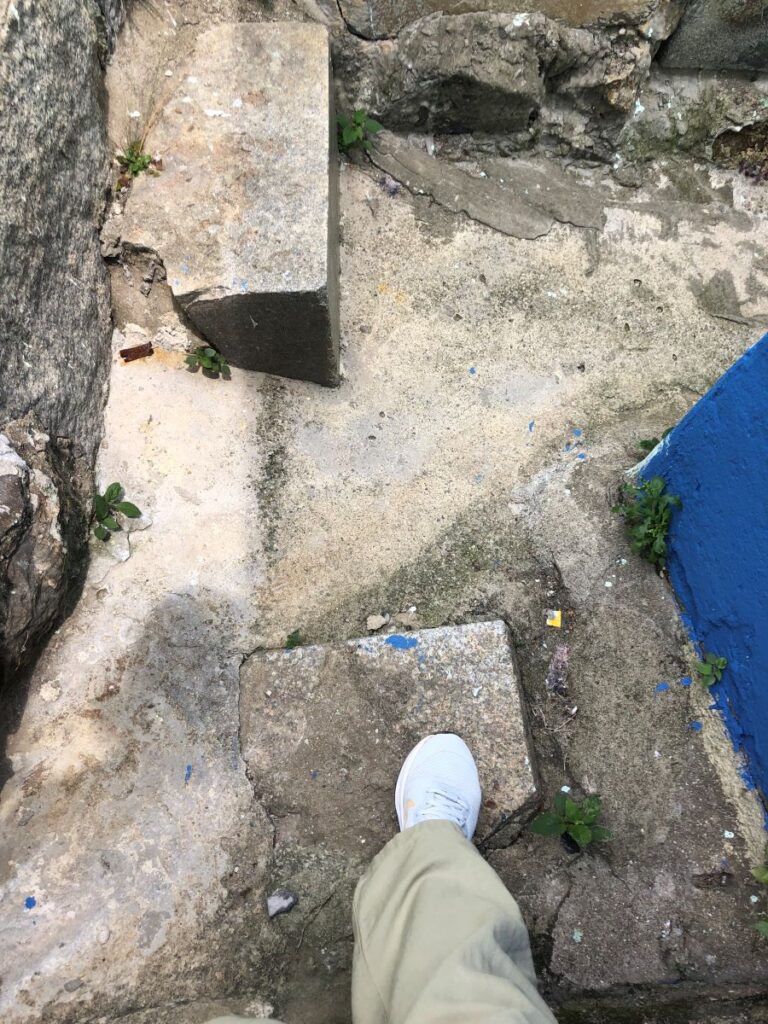
Only a dozen or so, can the inscriptions be seen.

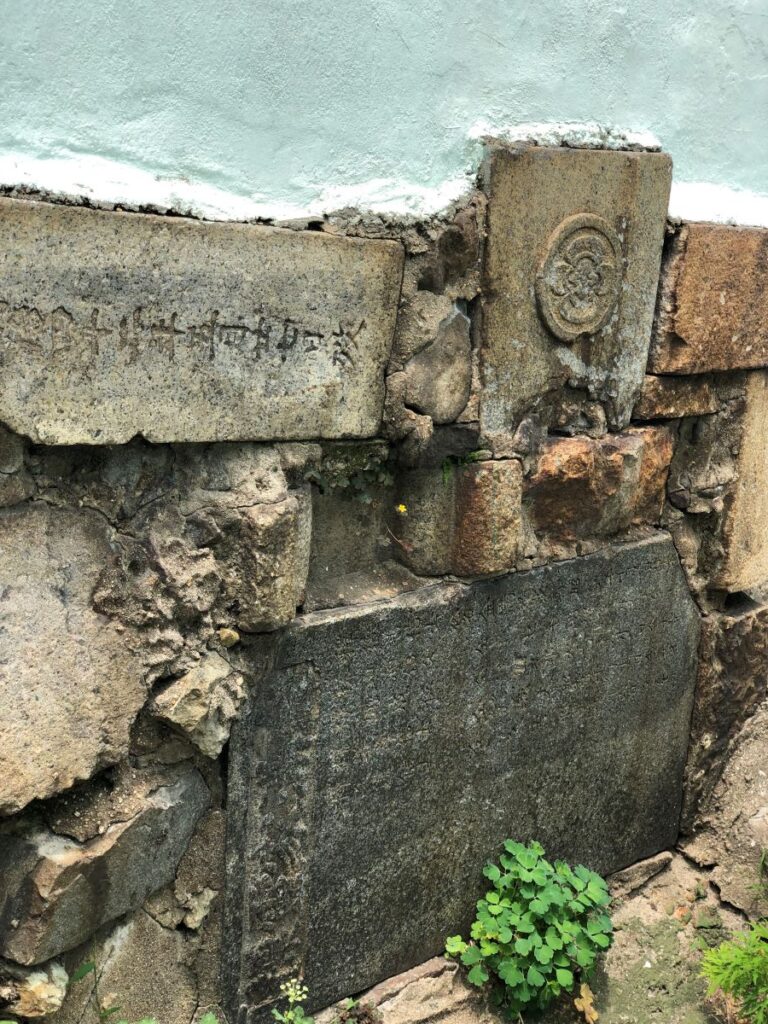
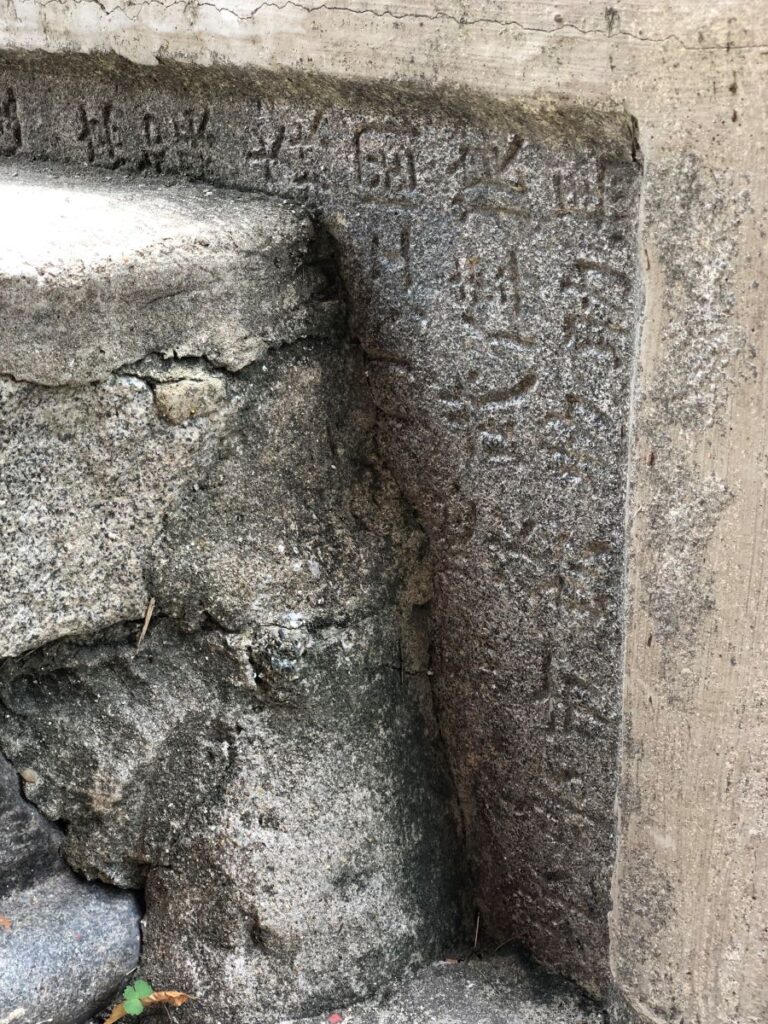
Museum
There didn’t seem to be anyone around when I was there. At least one small room was open for visitors off the street to wander into free of charge. The little alleys around here are painted decoratively and brightly.
Stairs
One of the most enjoyable things for me while exploring Ami-dong was the multitude of staircases. These old alleys, snake their way up and down through every nook and cranny. These are how people reach their homes. There are no direct roads to their front doors. It was such an interesting place to see how local life evolves.
Even though the village is so incredibly crowded, they have still found places to install playgrounds for the children and exercise equipment for adults.
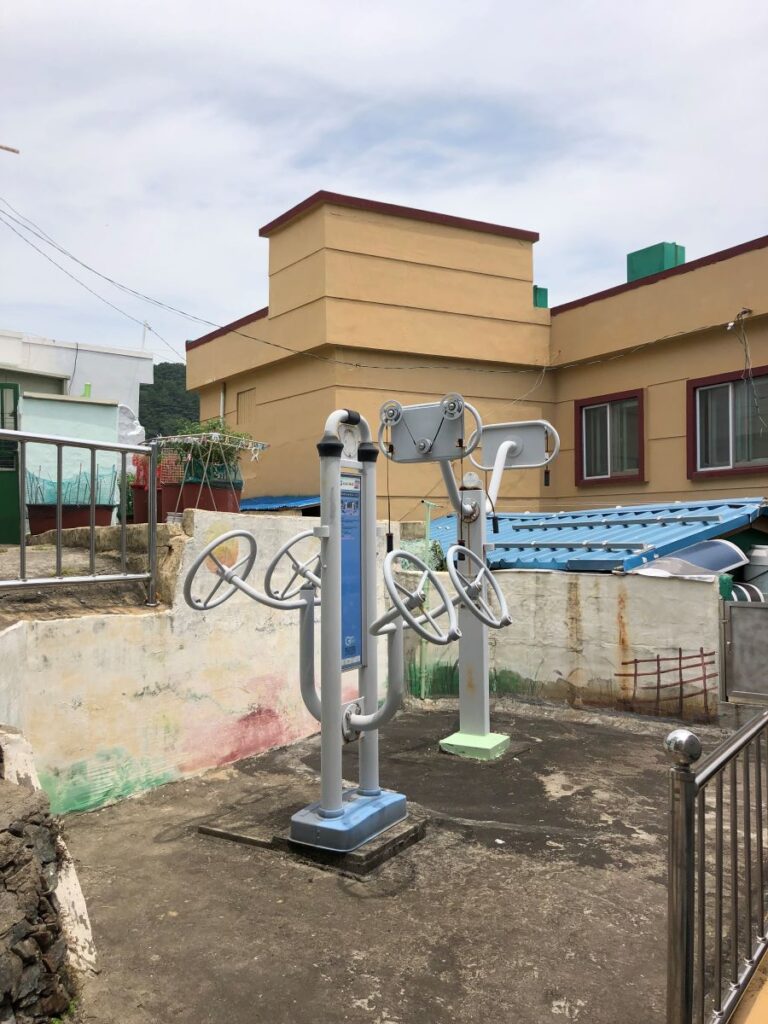
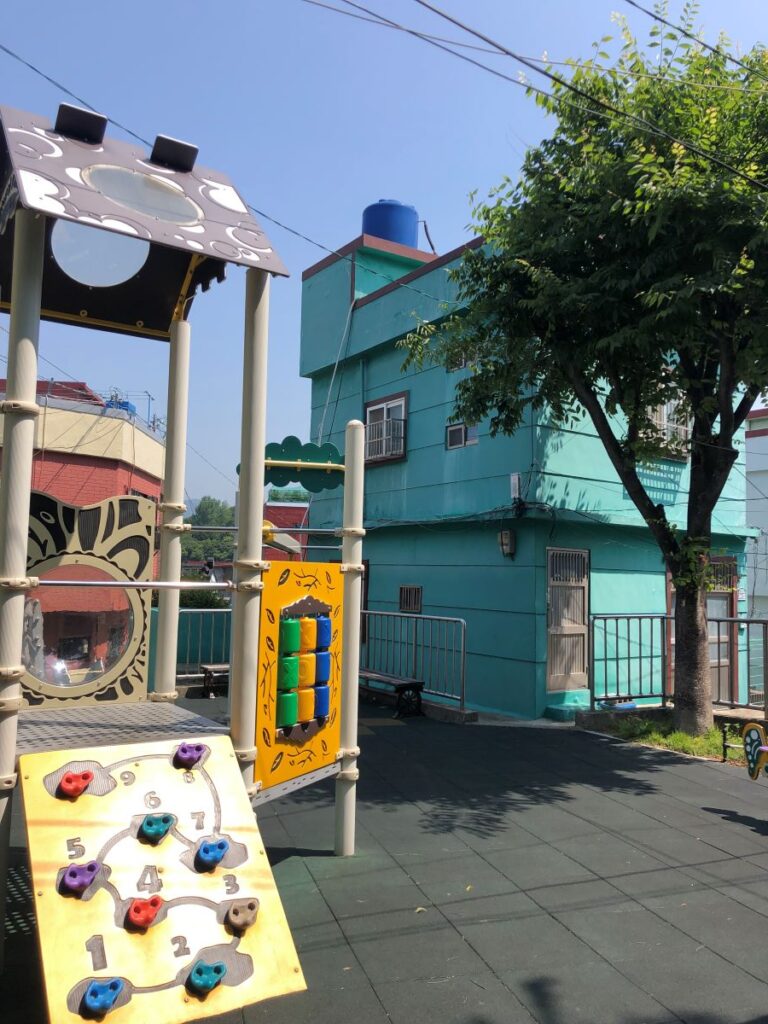
View Points
There are two main ones, both off the vehicular road that traverses the mountainside. The first one visitor will see is a stone wall with various lifelike figures sitting atop, looking towards the village.
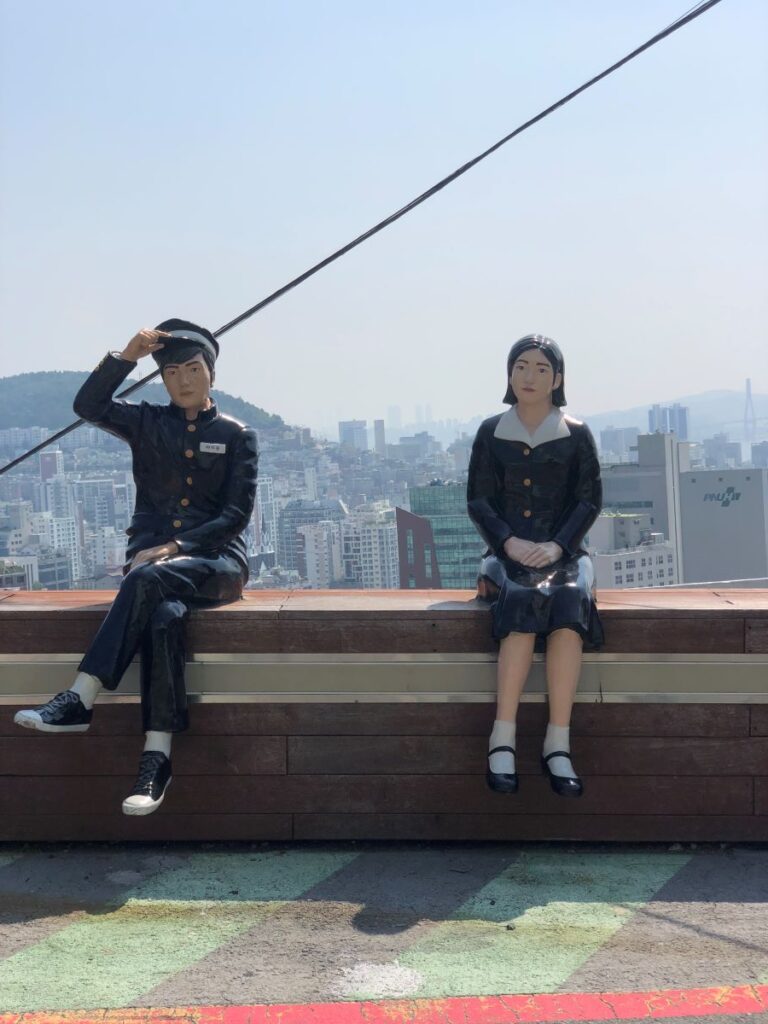
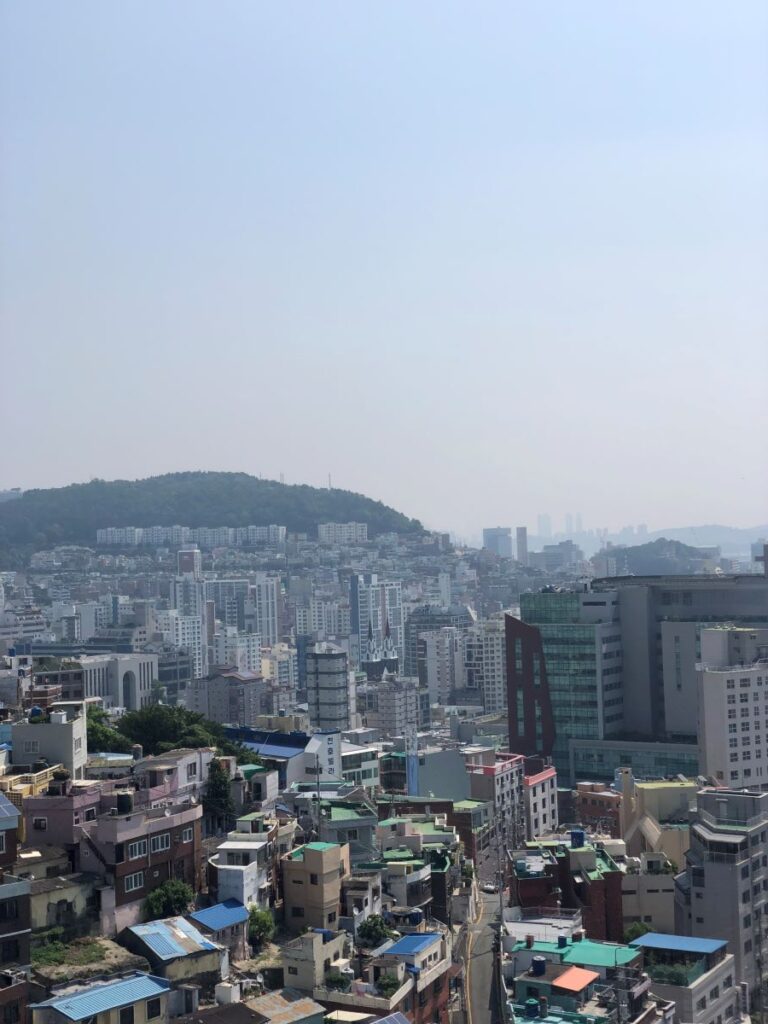
The second is a larger wooden platform quite a bit higher. Here are cartoon characters that I still don’t know the significance of. The view from here is quite beautiful, if not a big smoggy.
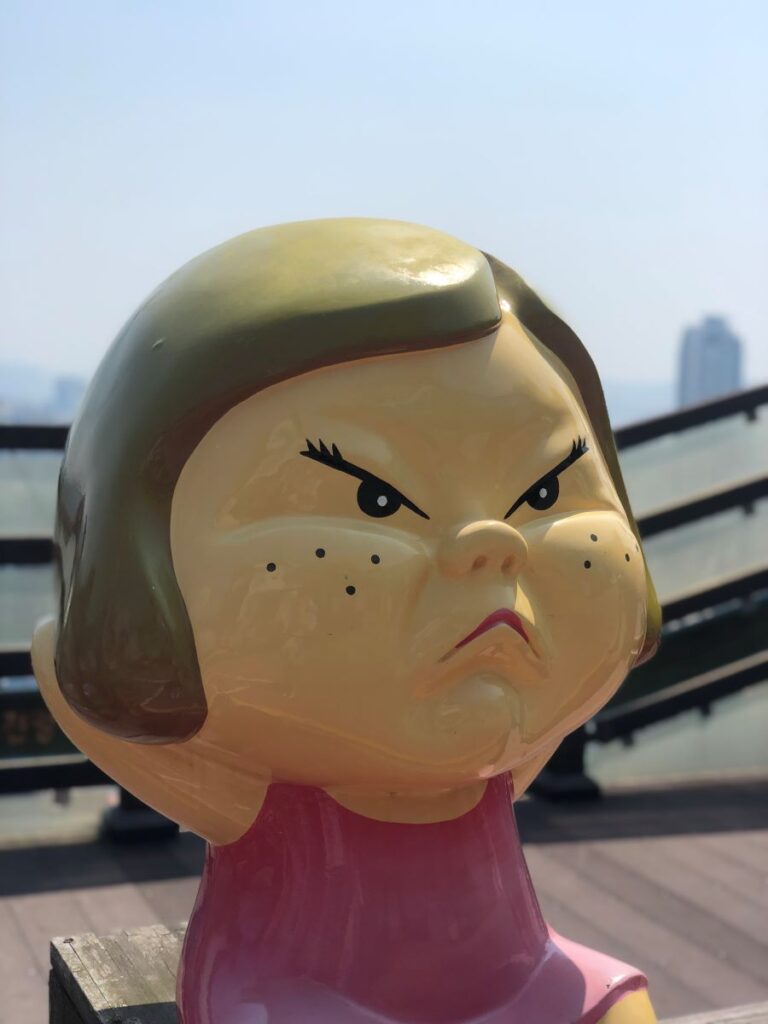
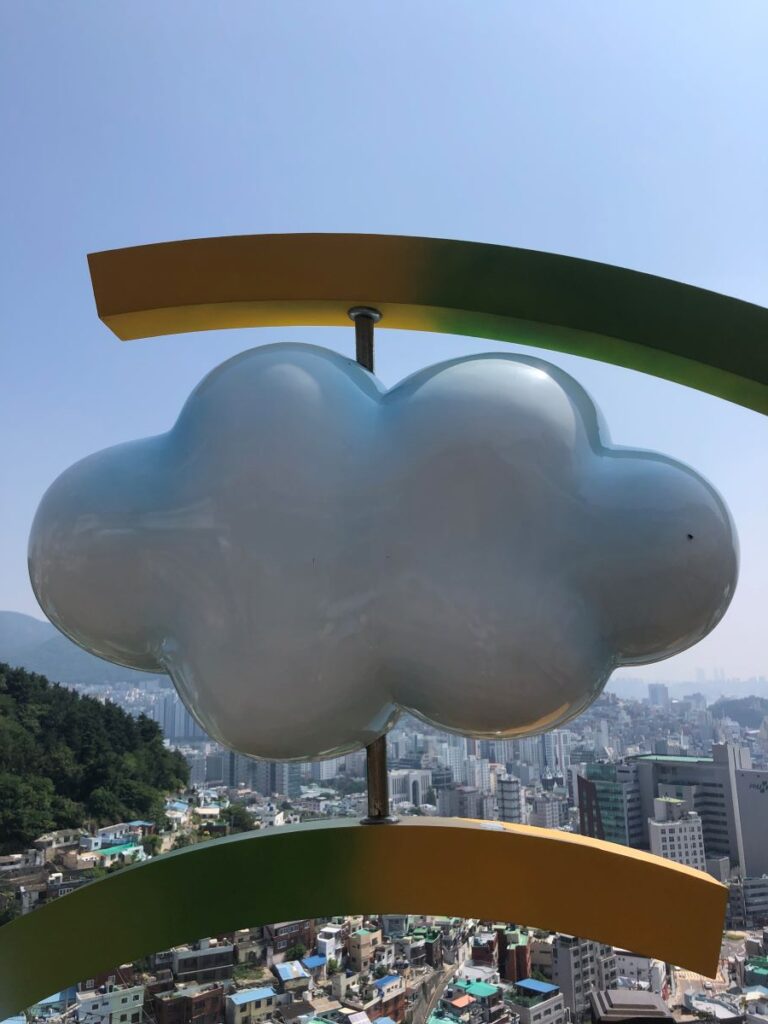
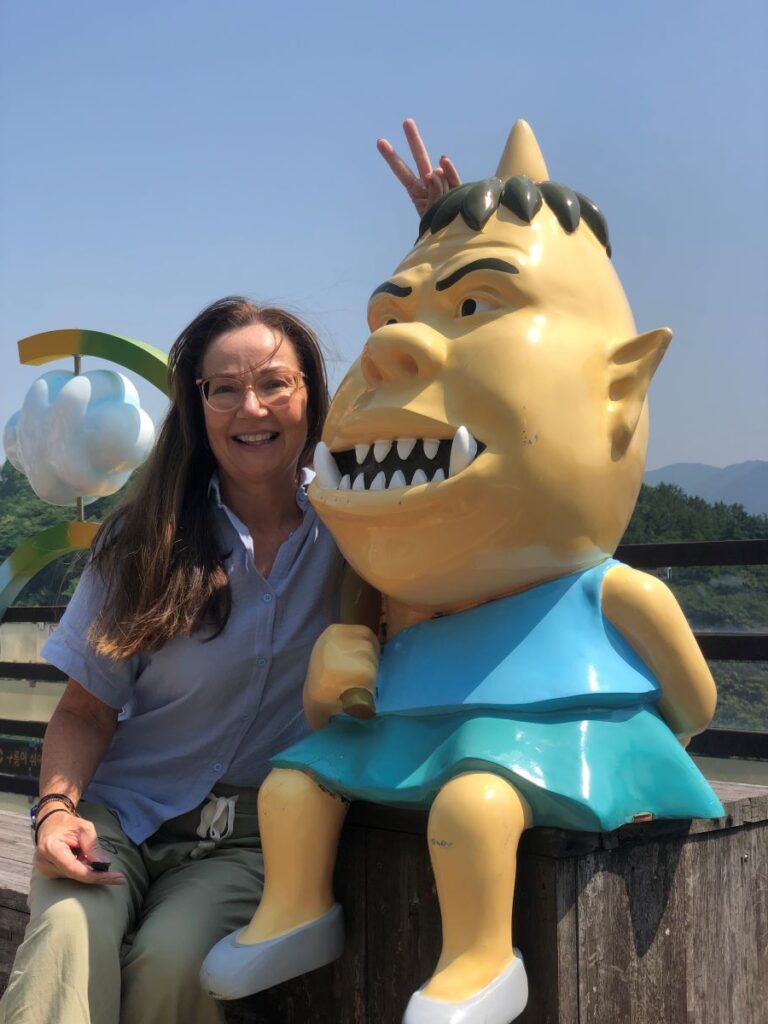
I was really moved snaking my way up and down this hillside, realizing that people are still living here. Descendants of those refugees who fled for their lives. This is a living, breathing museum of sorts. The dim narrow staircases and alleys form an intricate maze. It is a privilege to be able to walk in this neighbourhood, explore and discover what life must have been like and still is for many.
